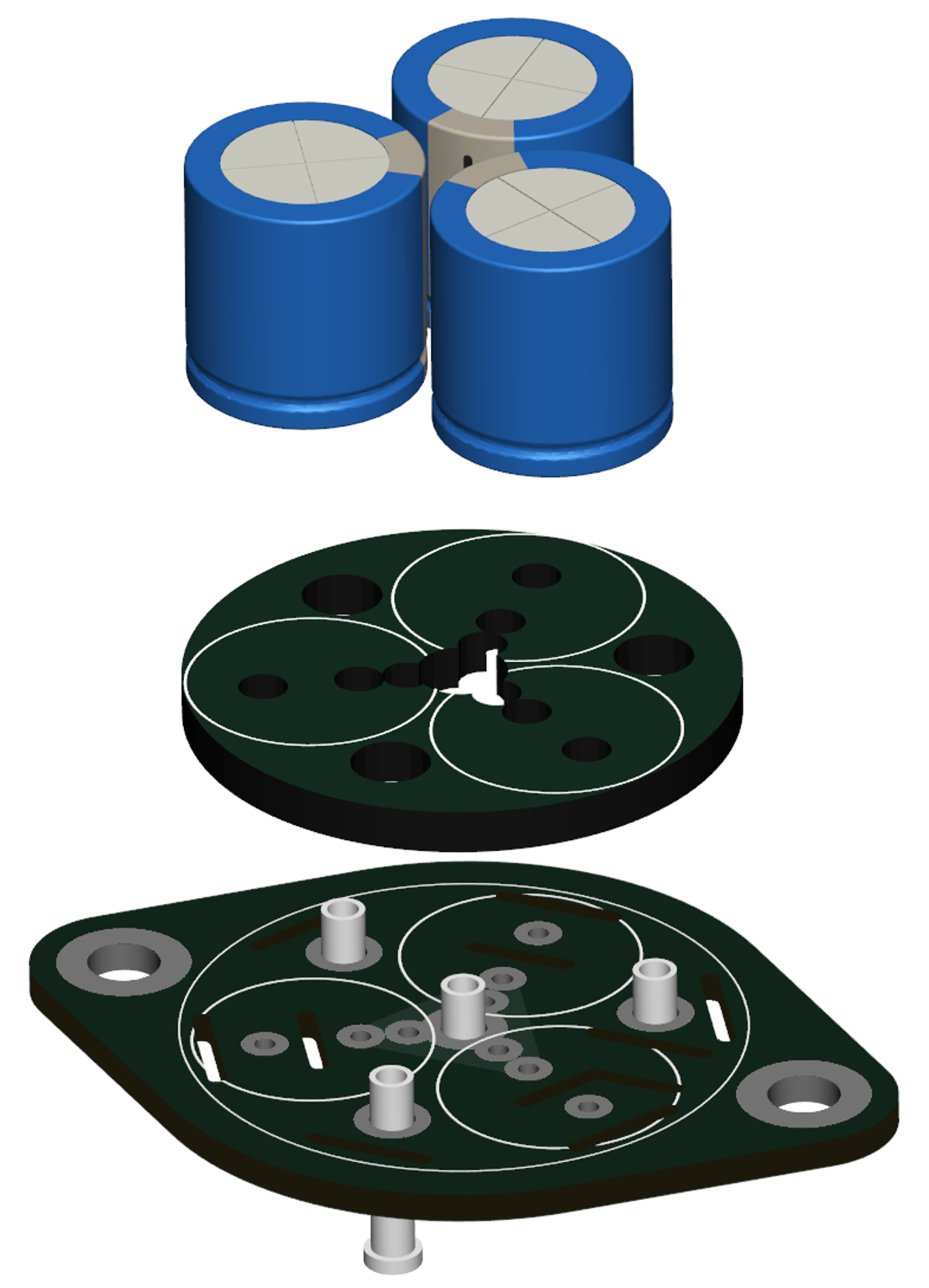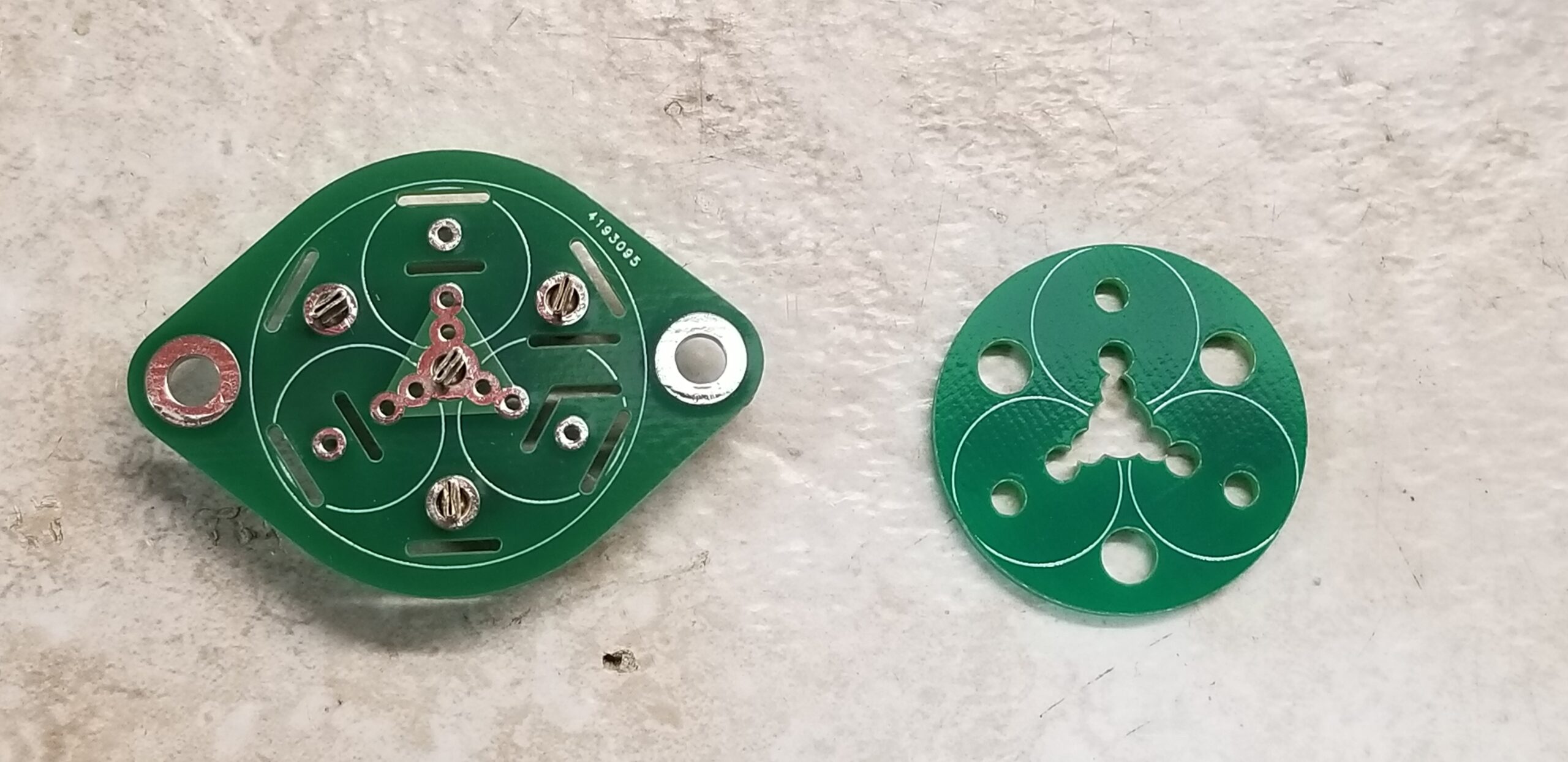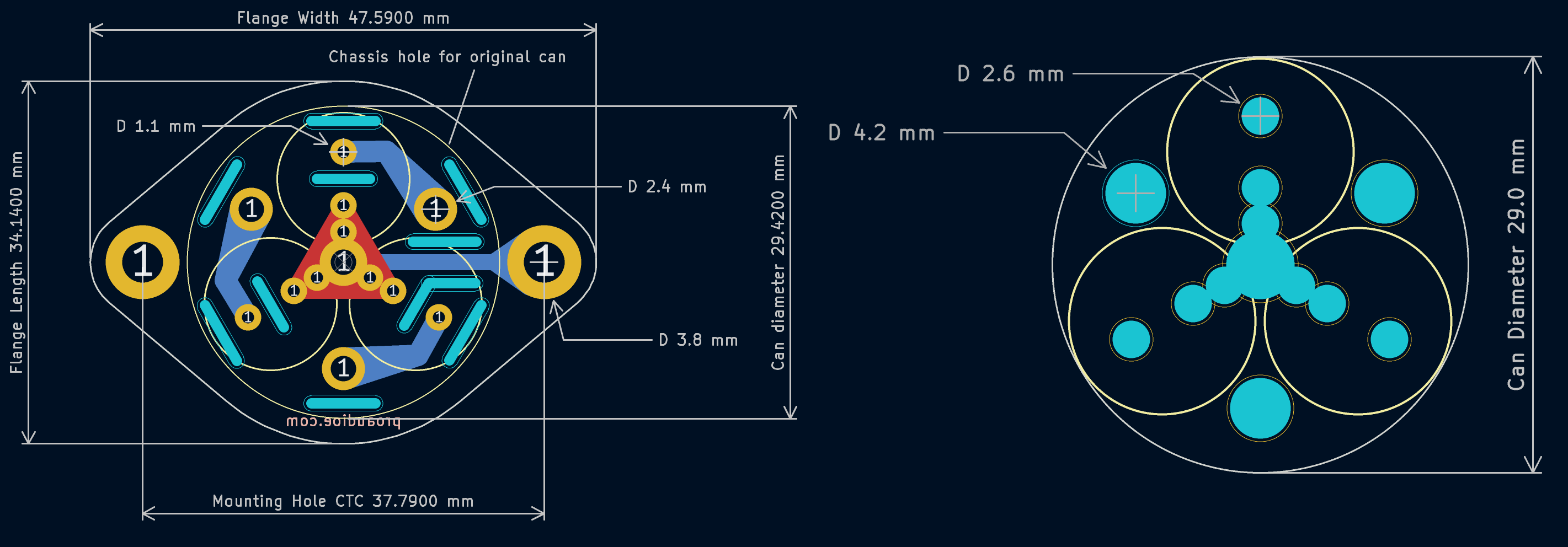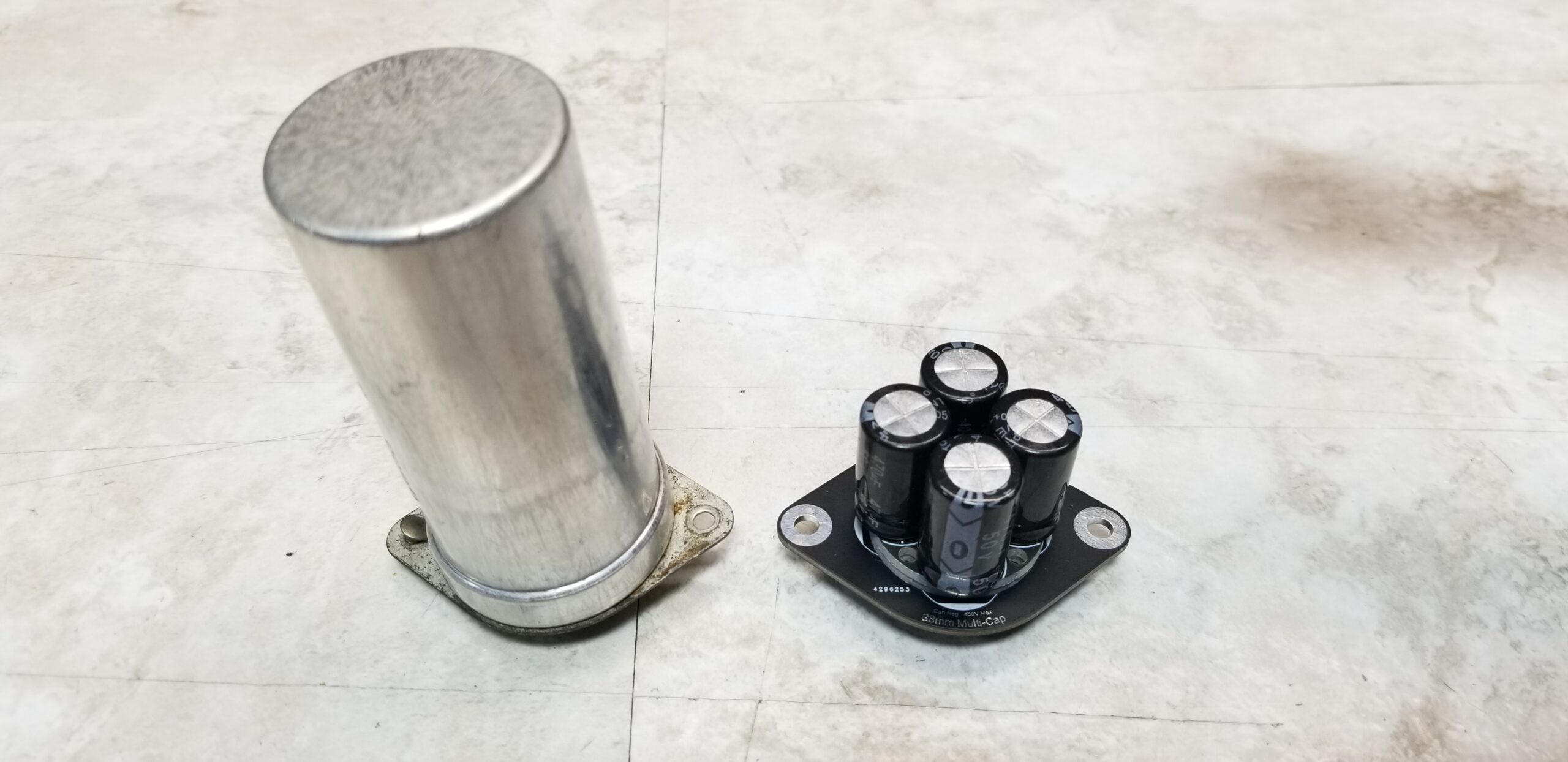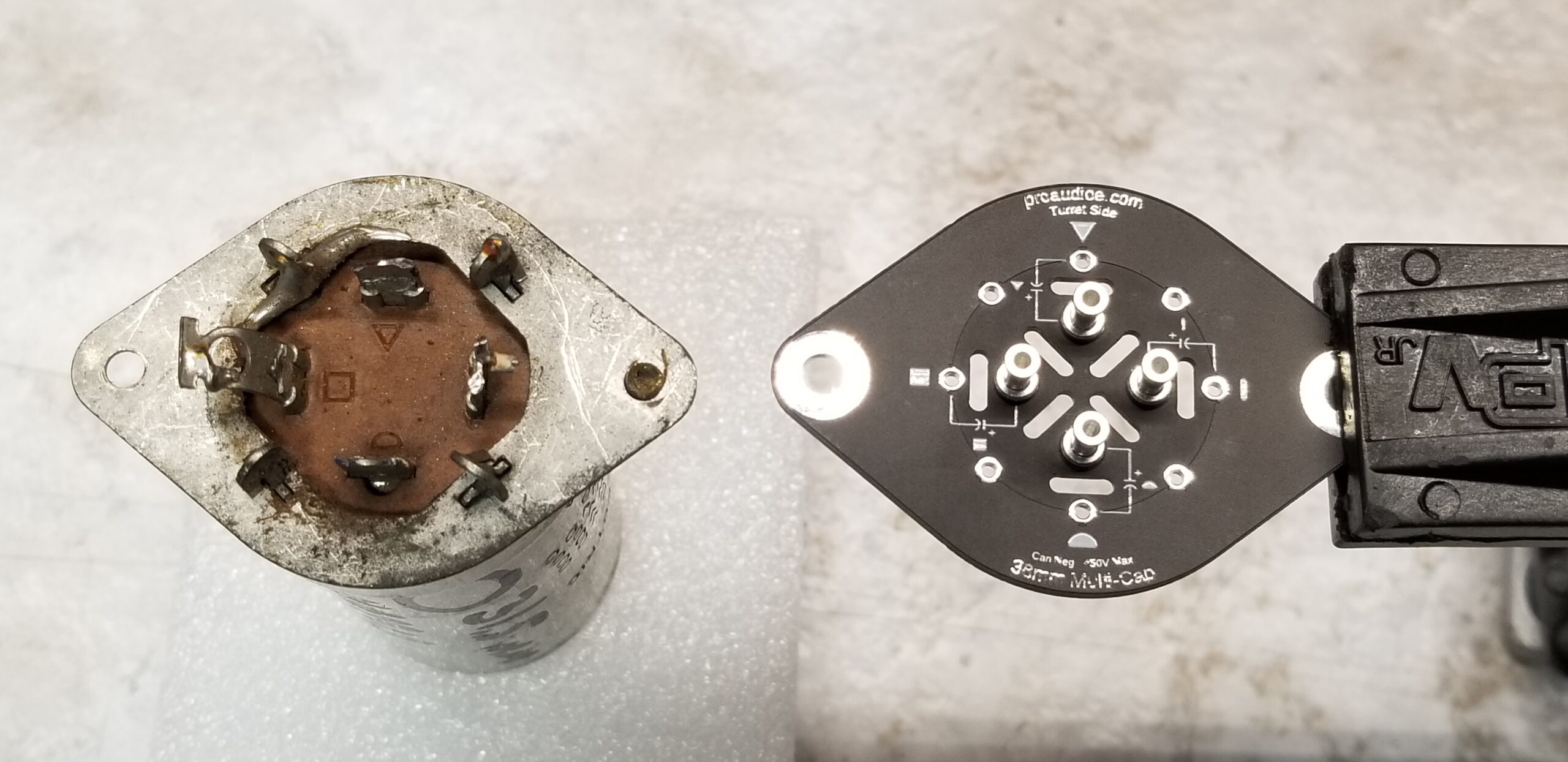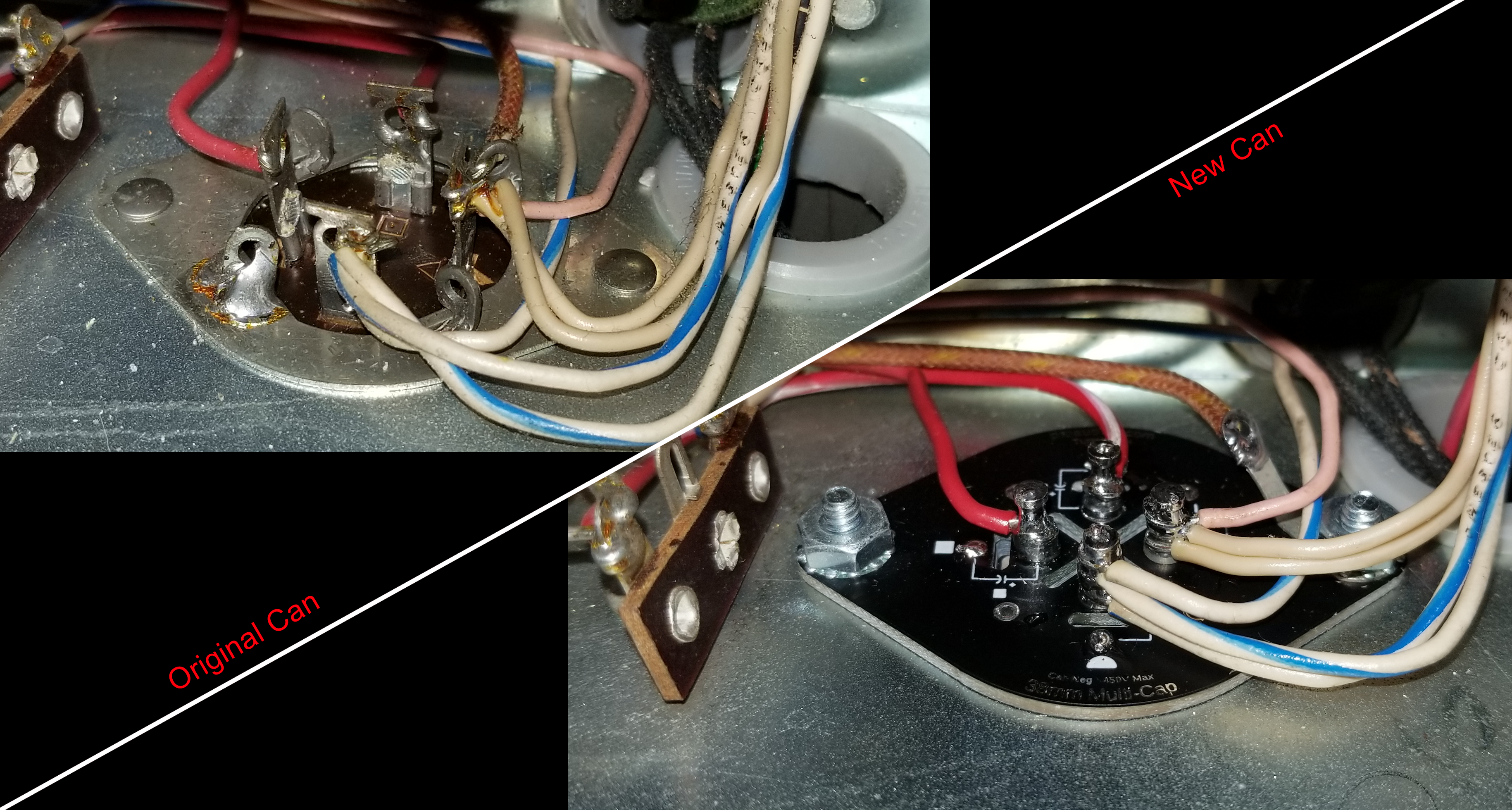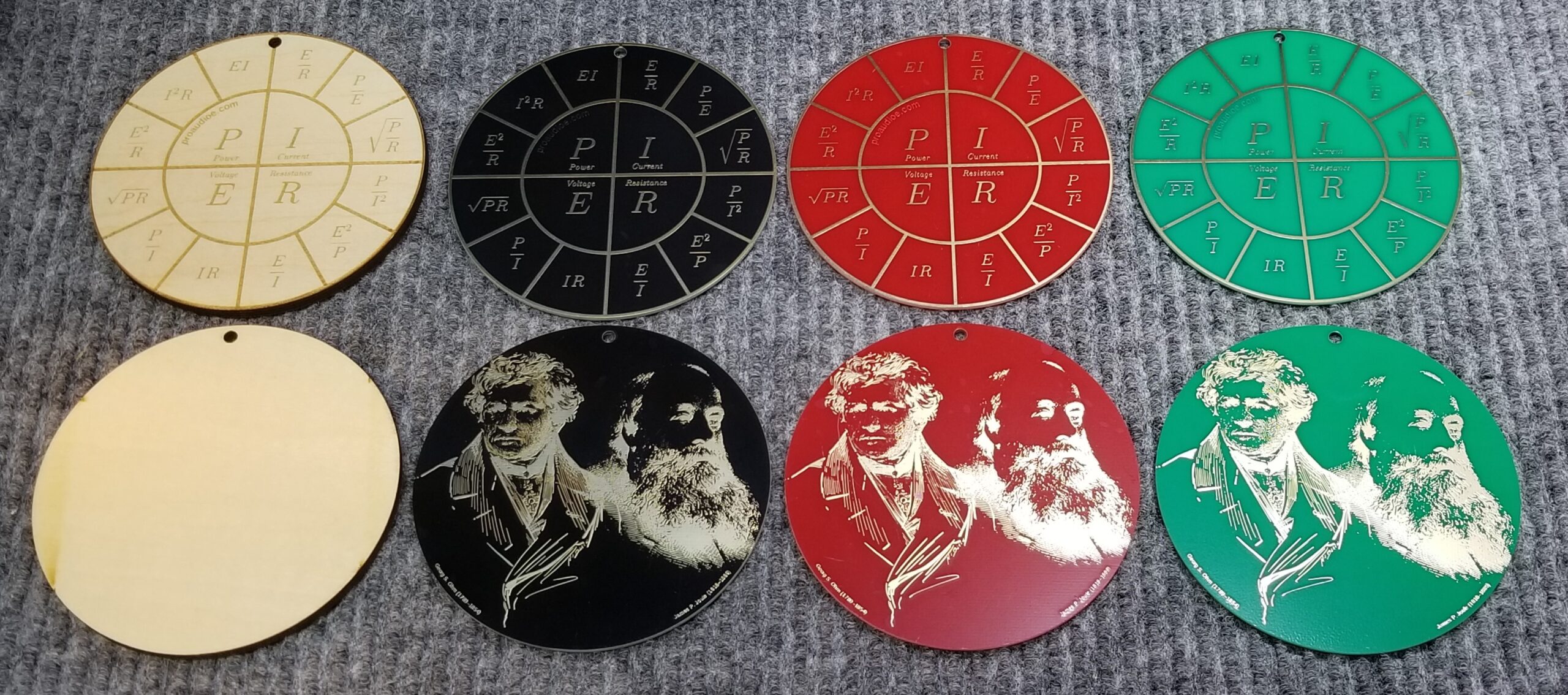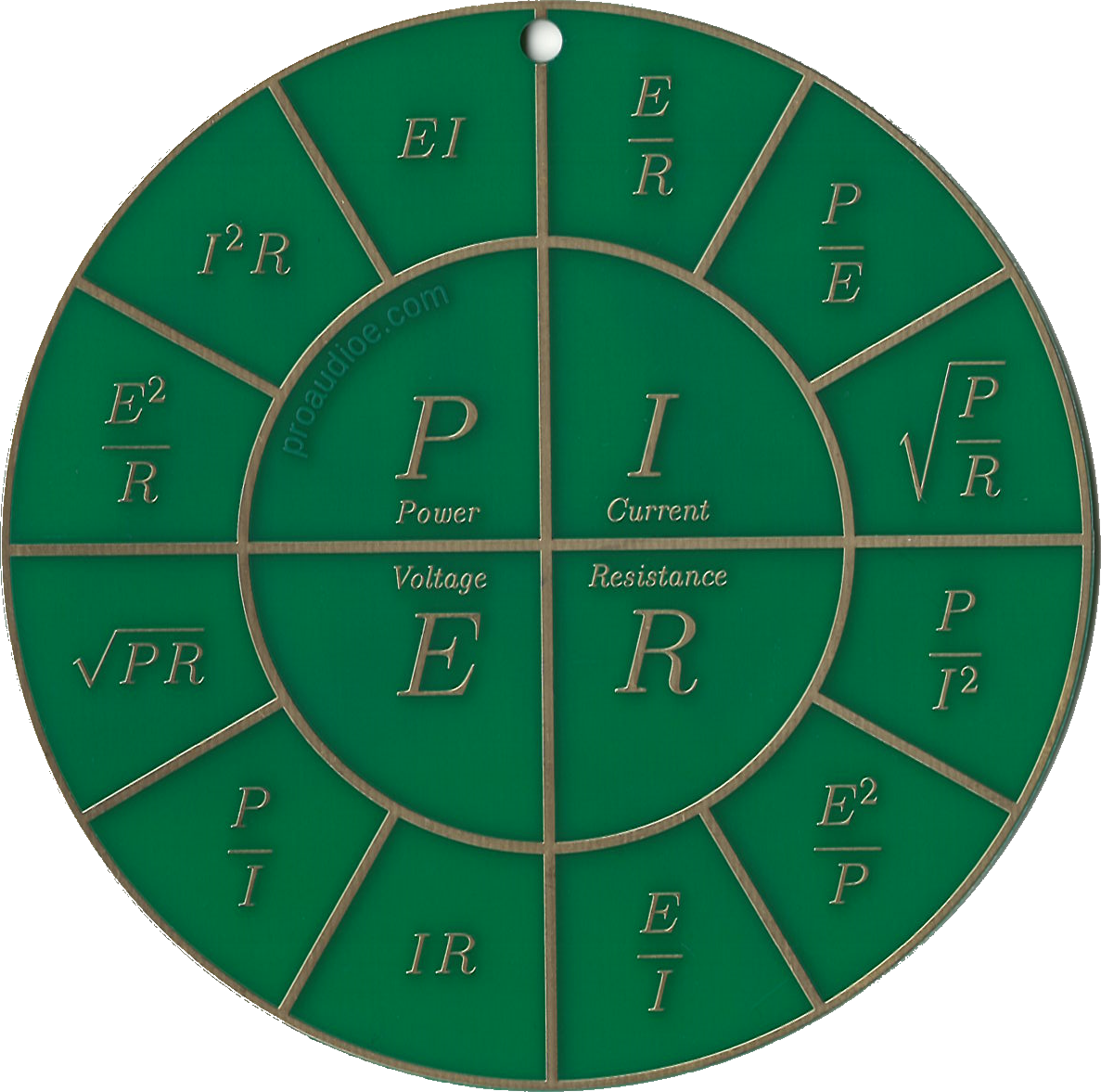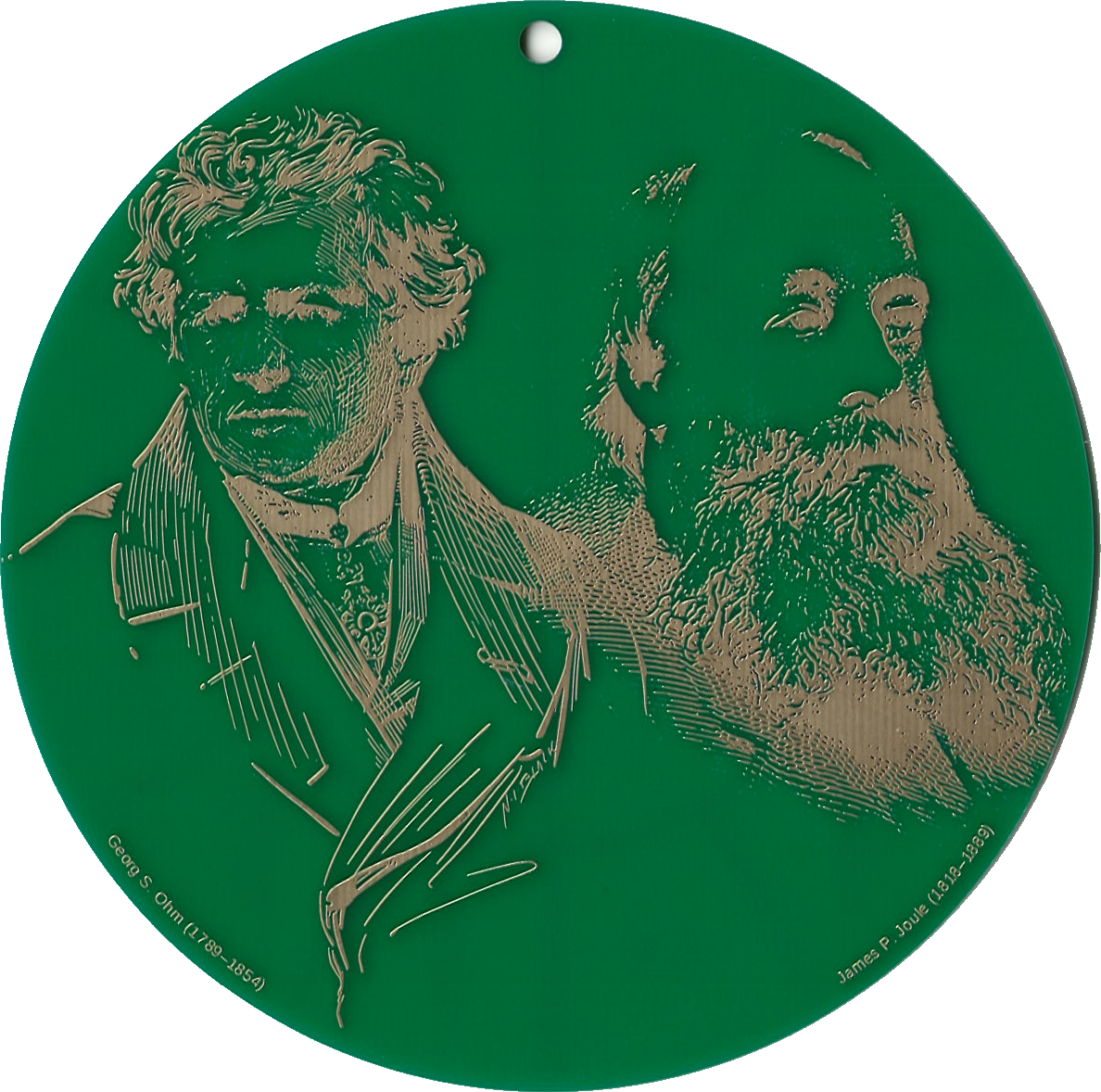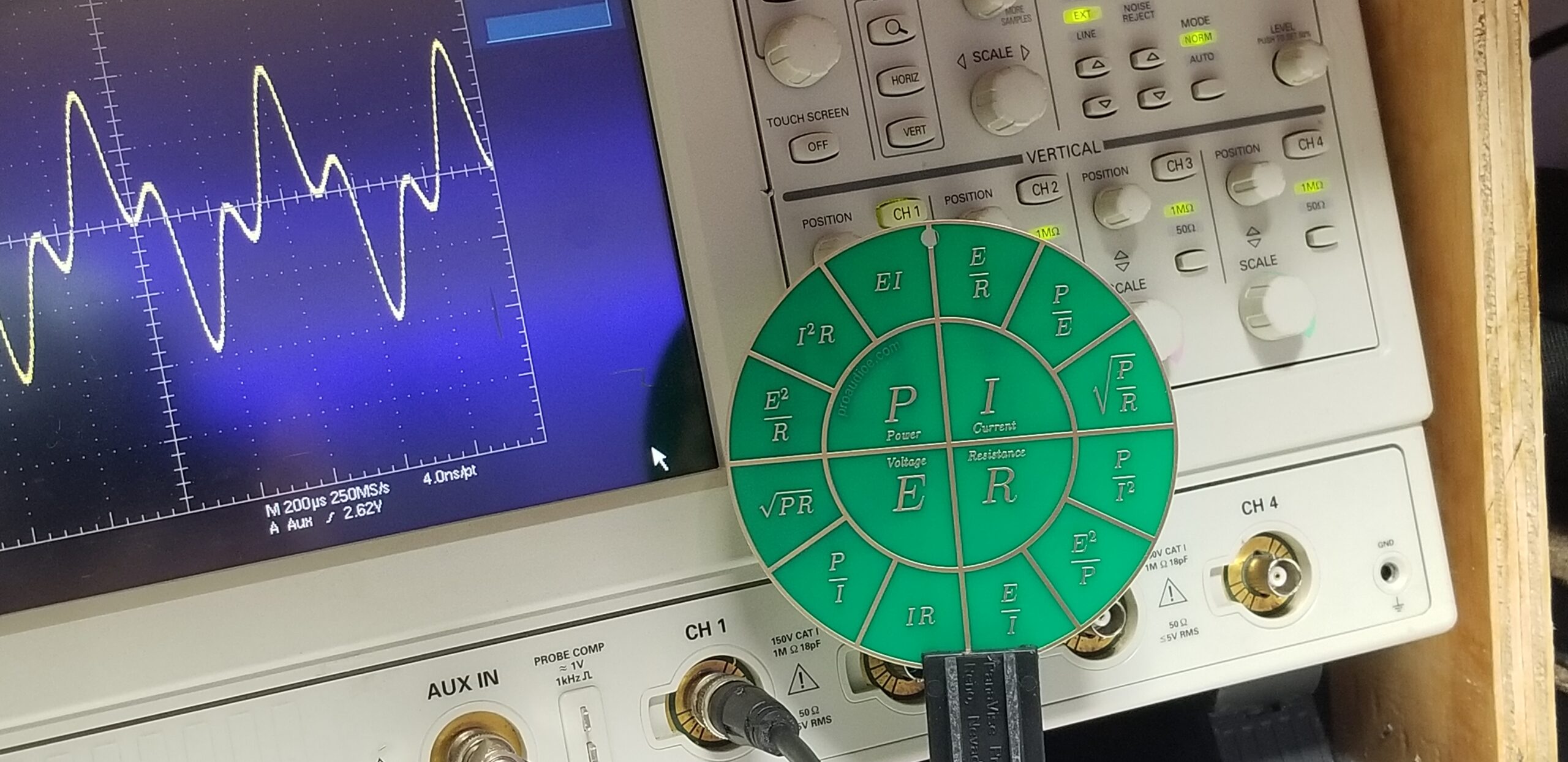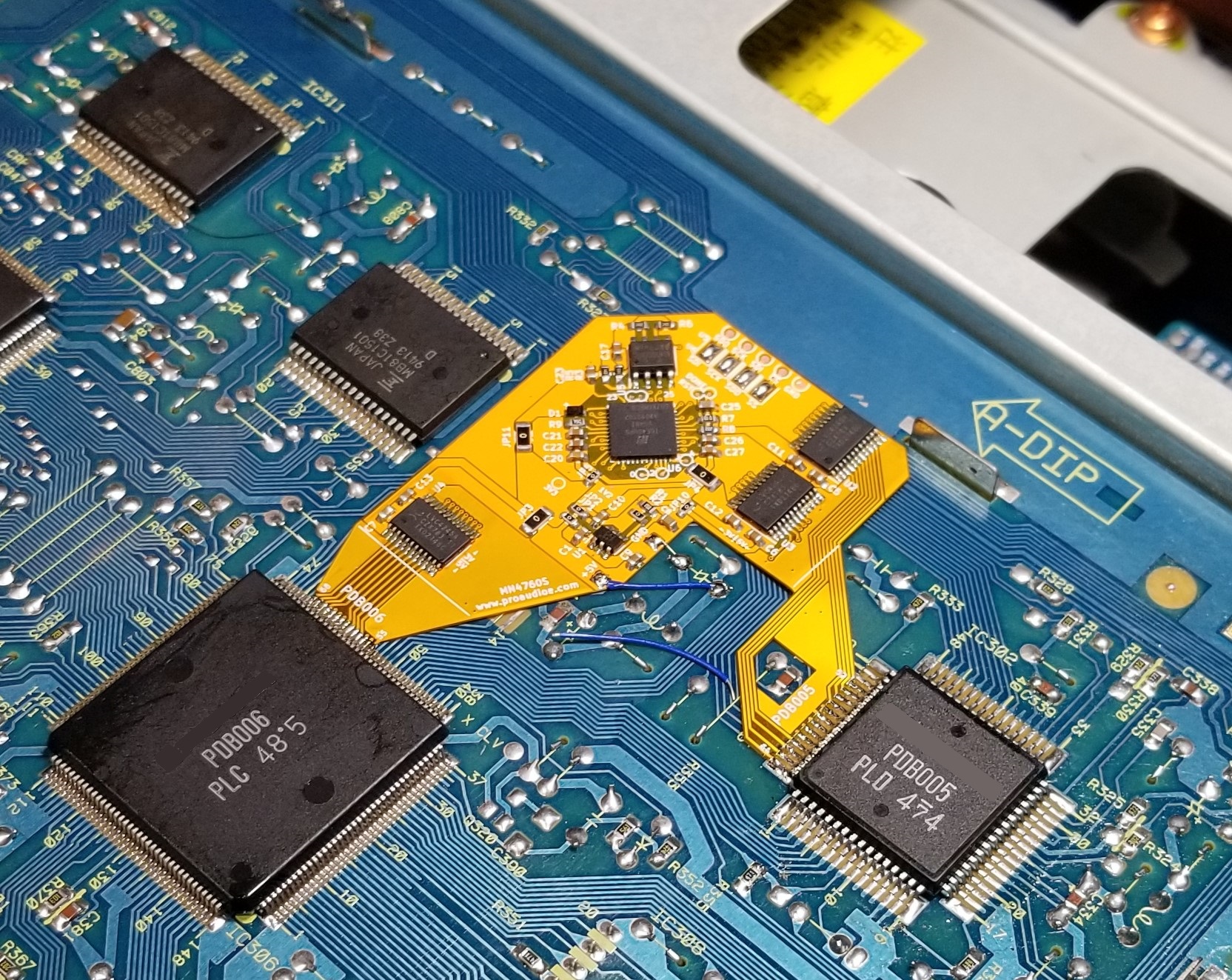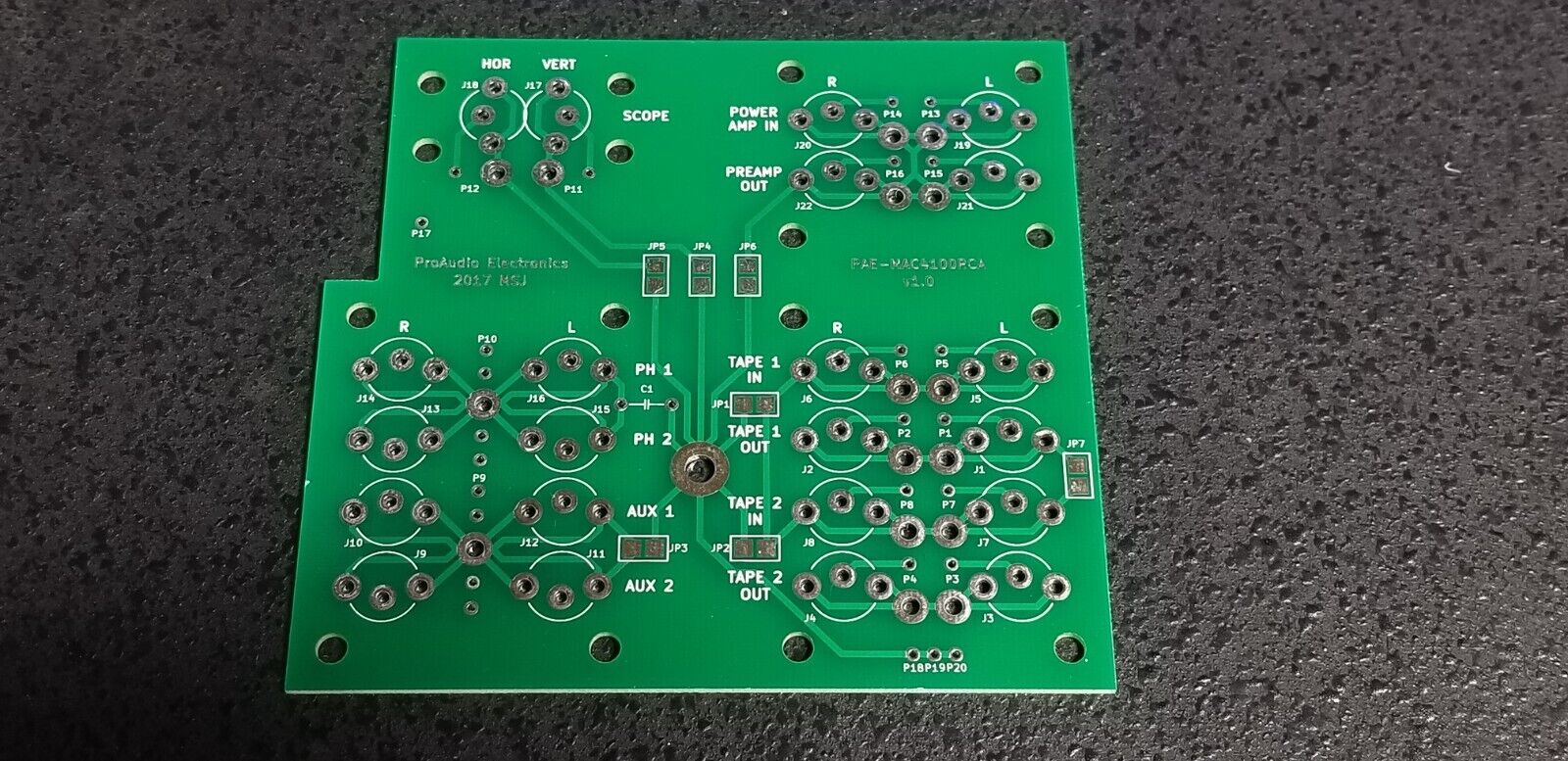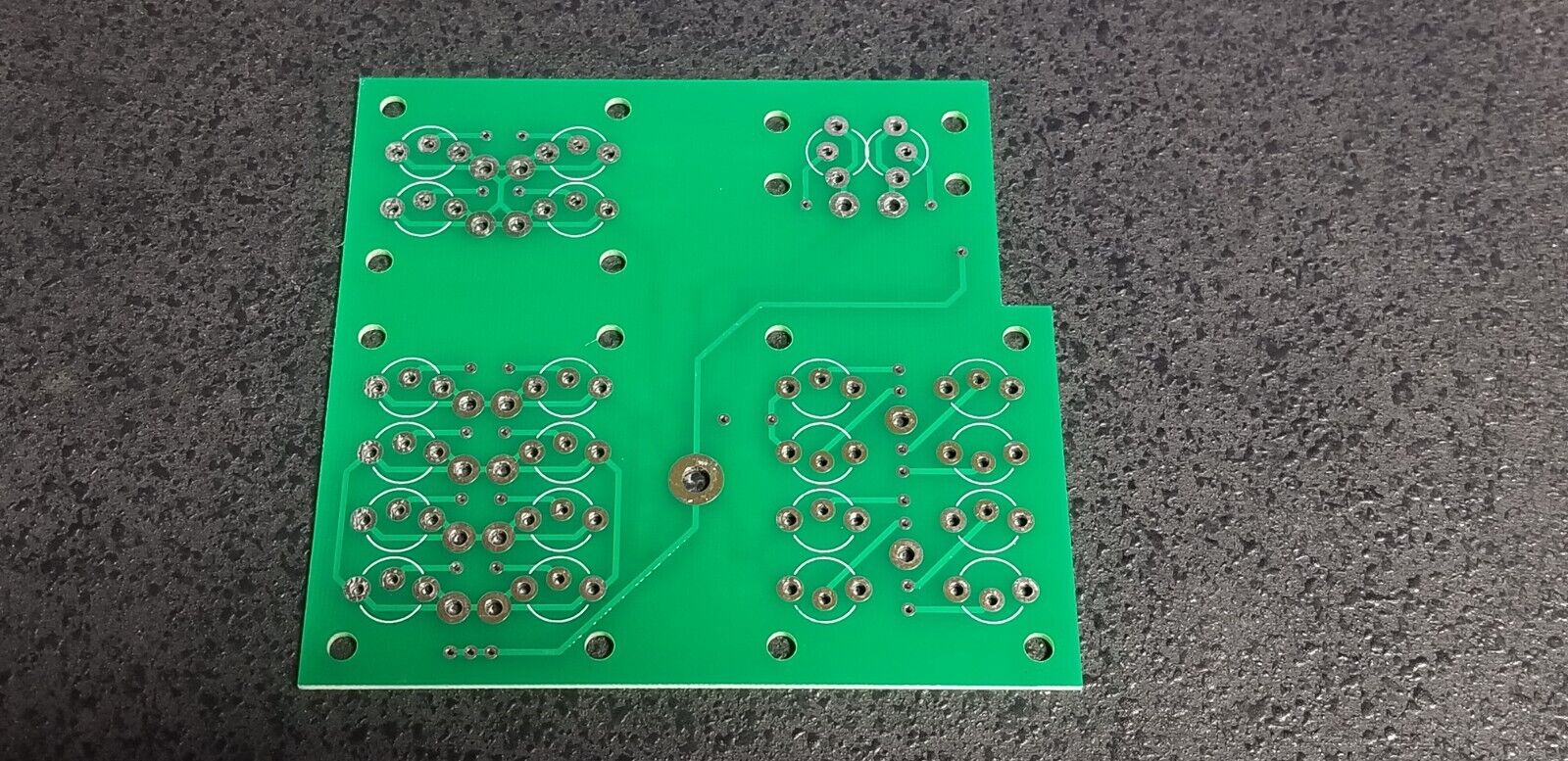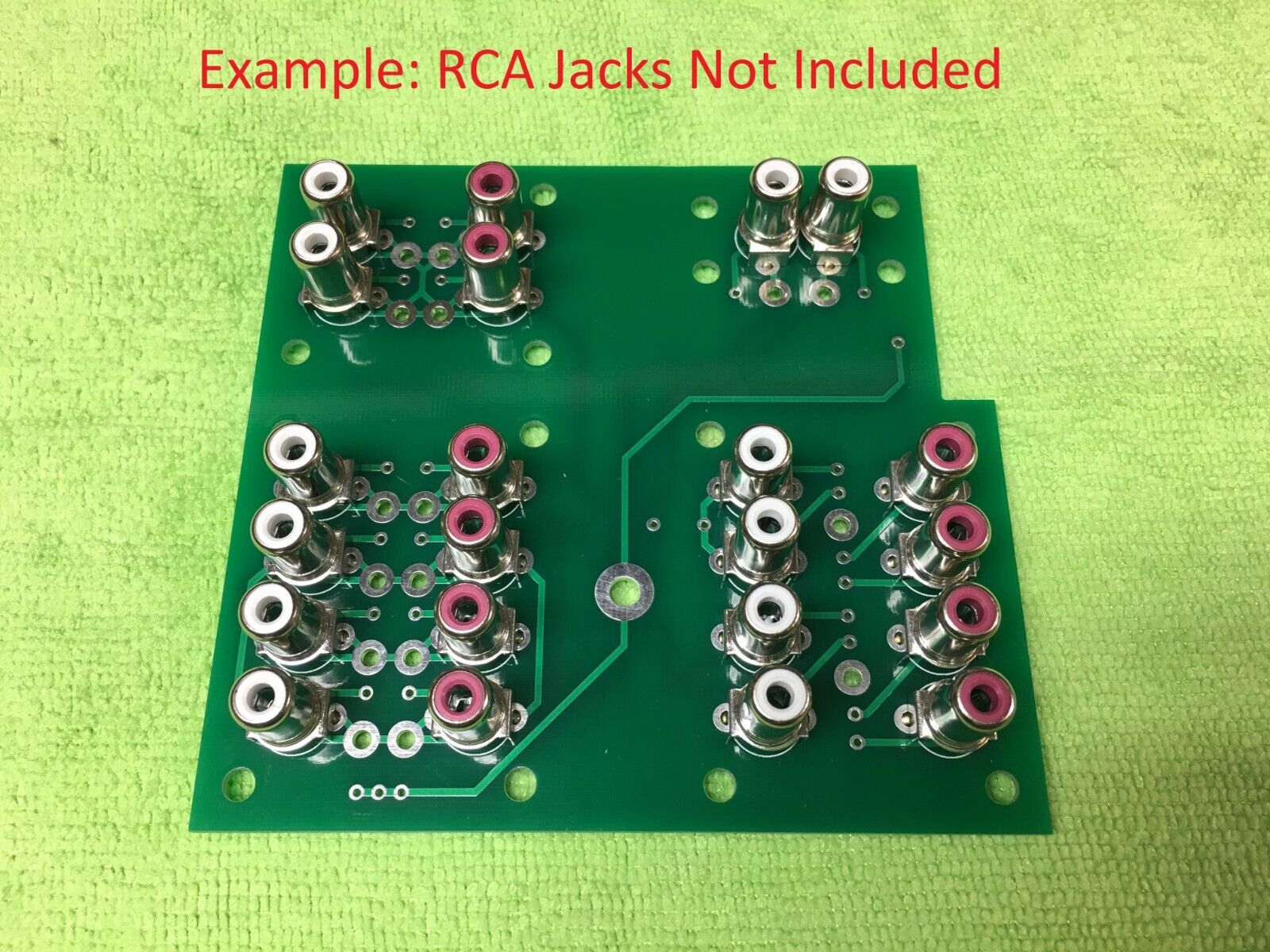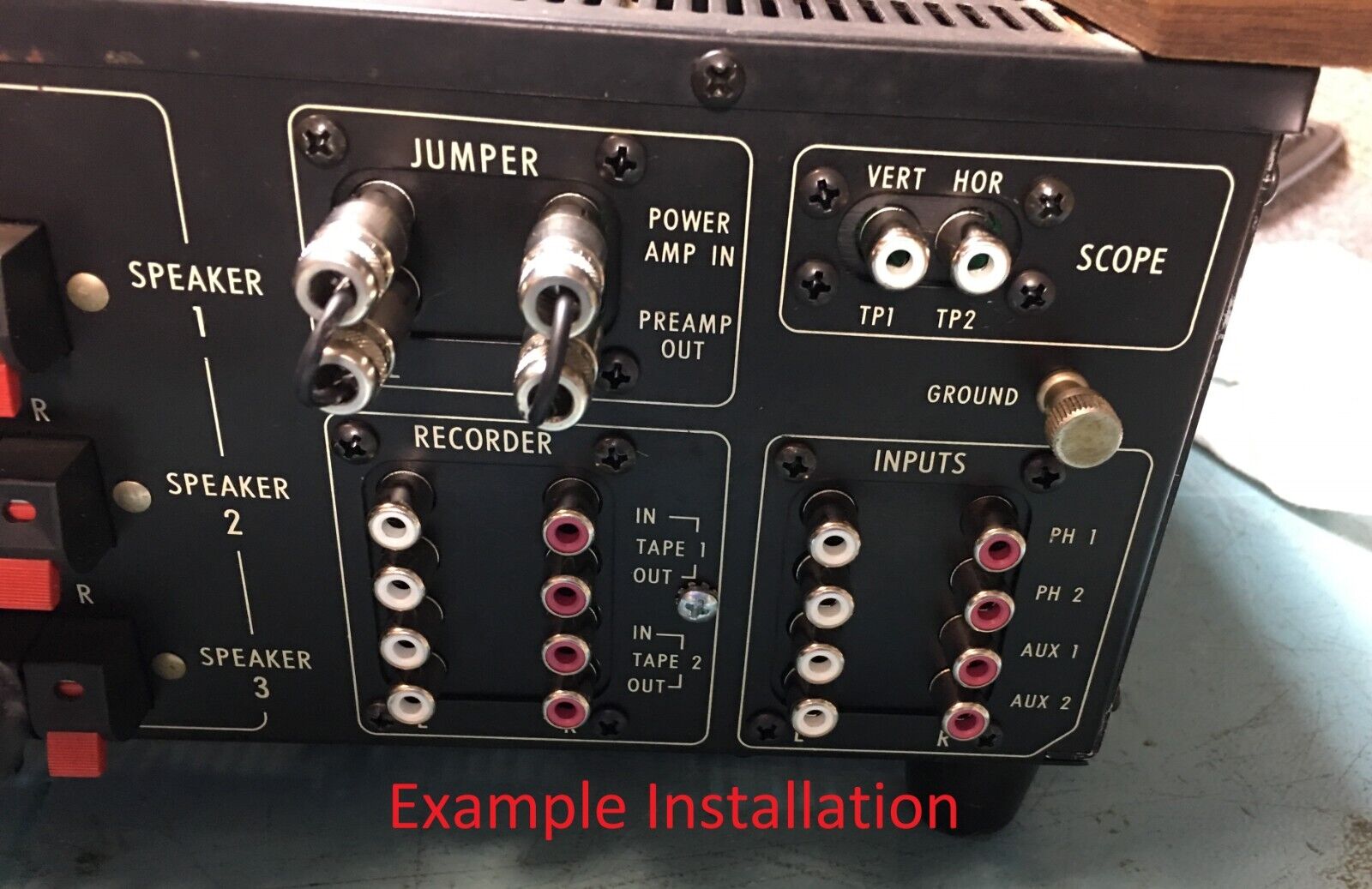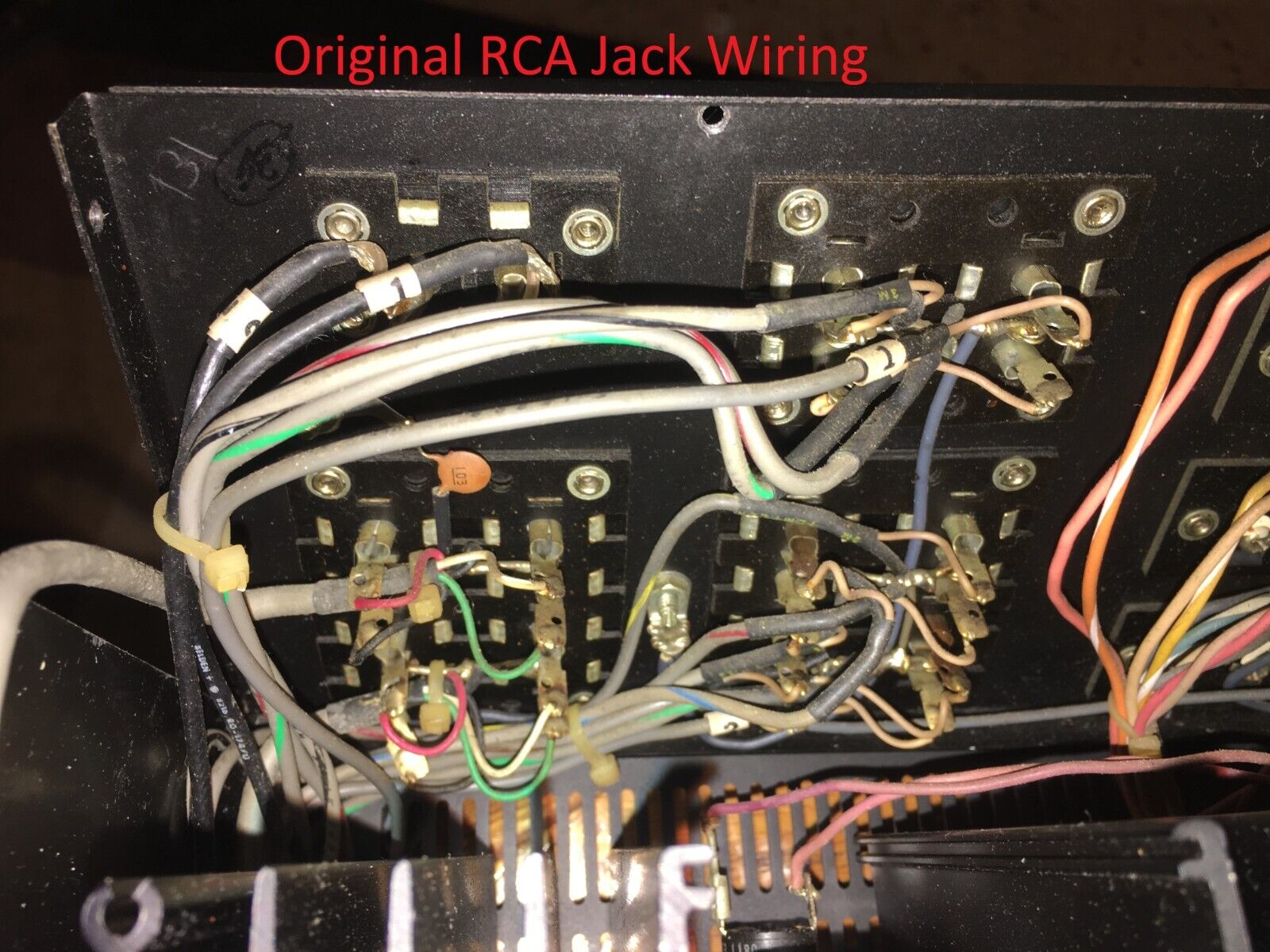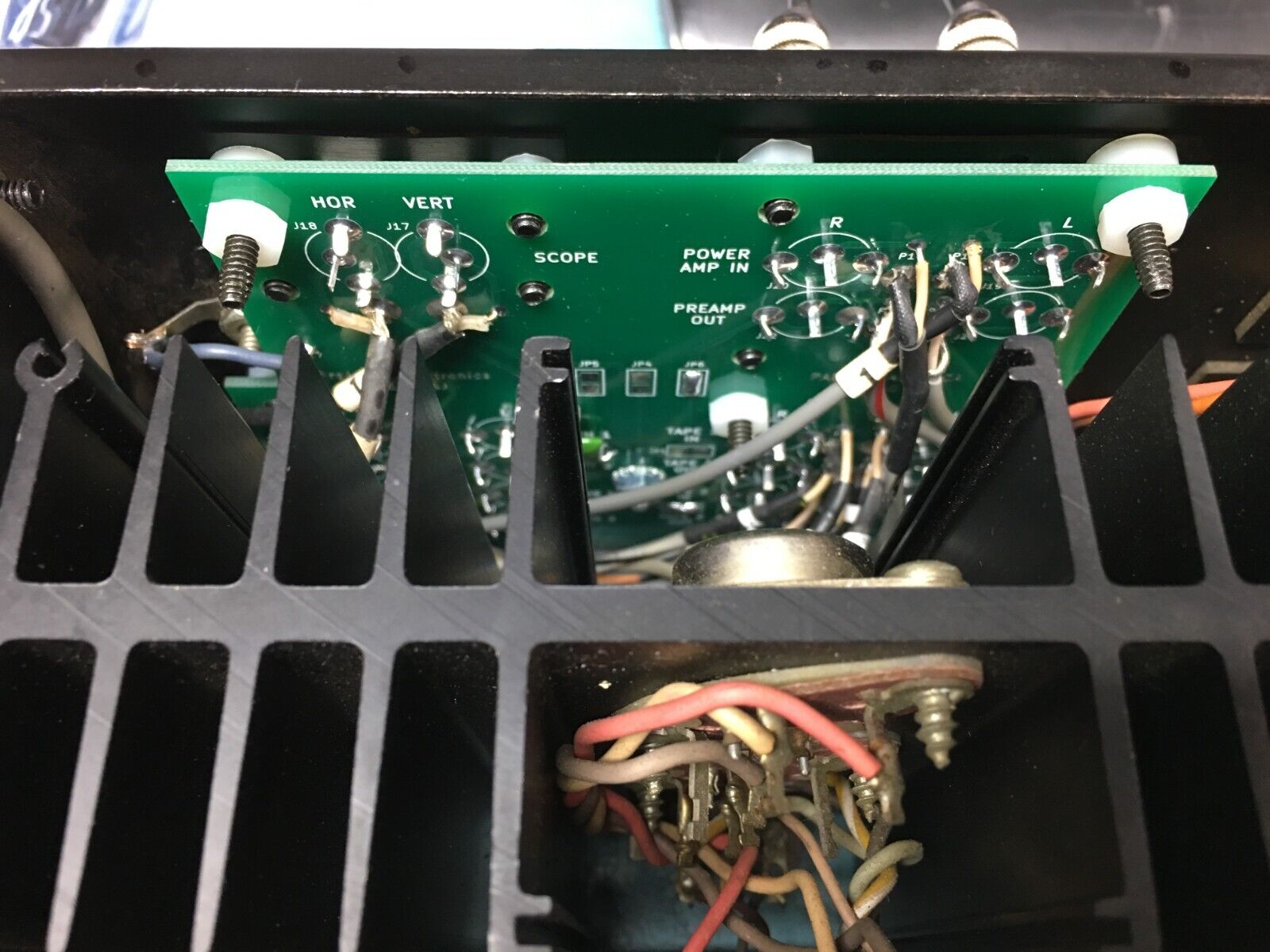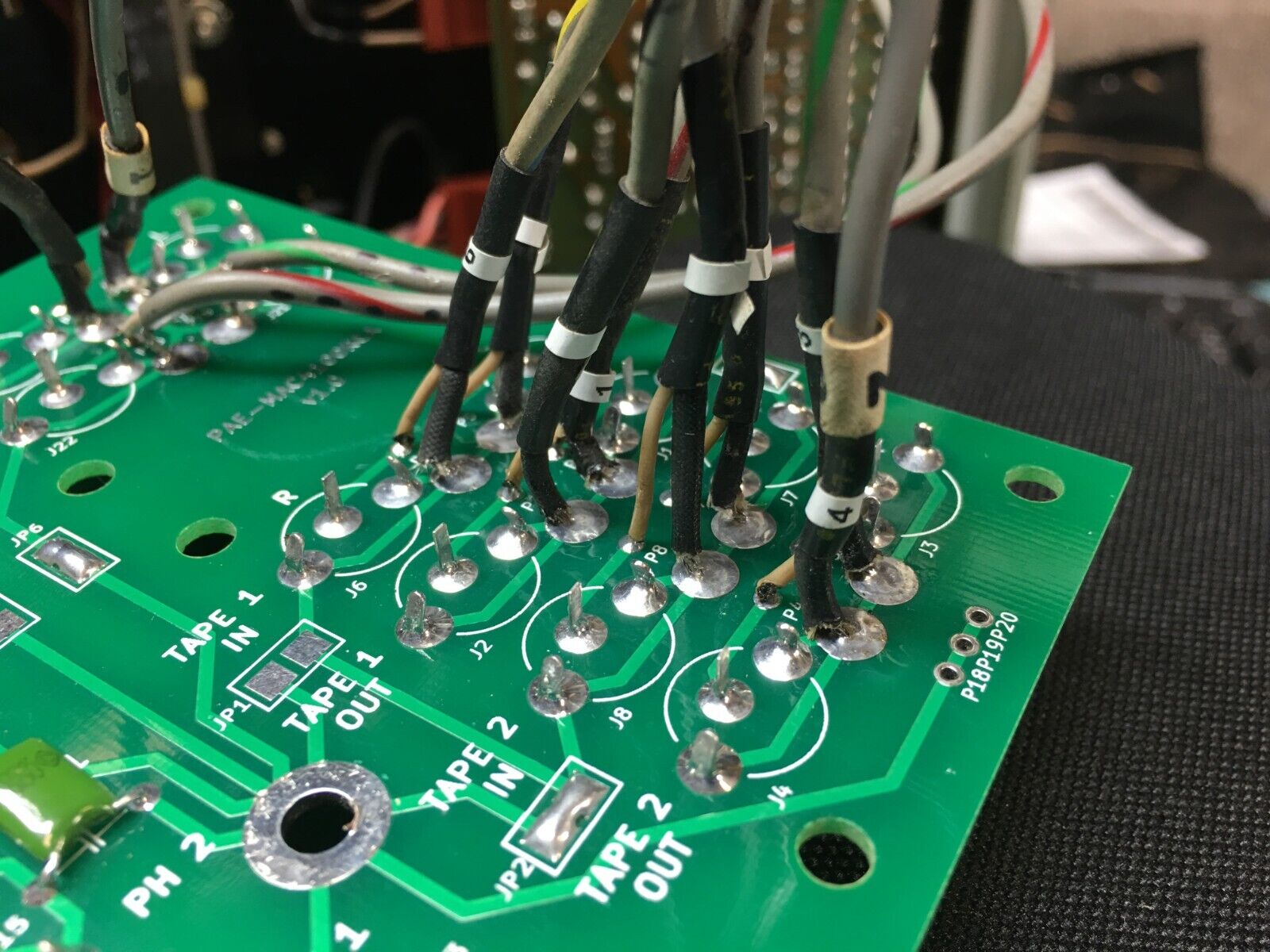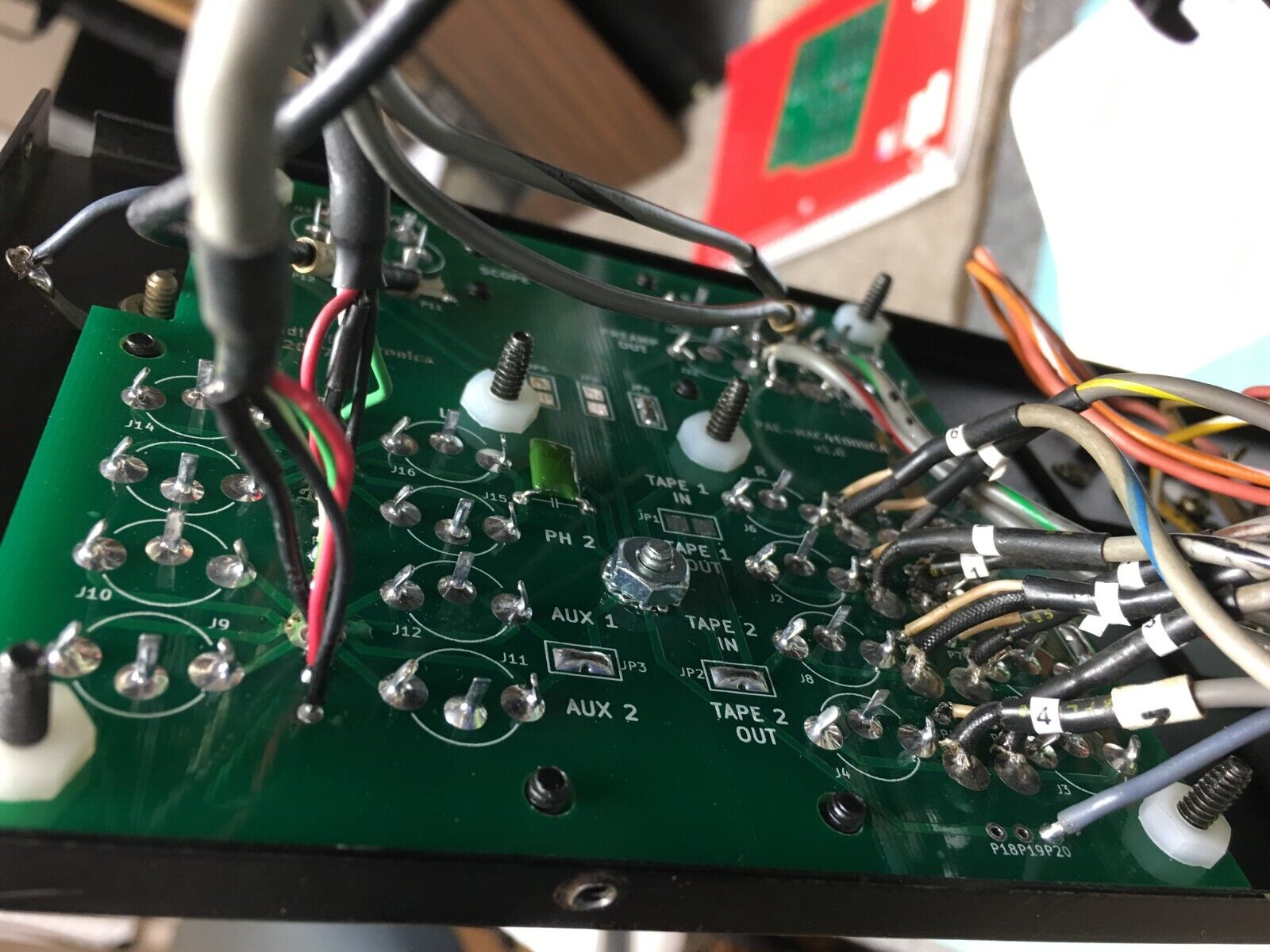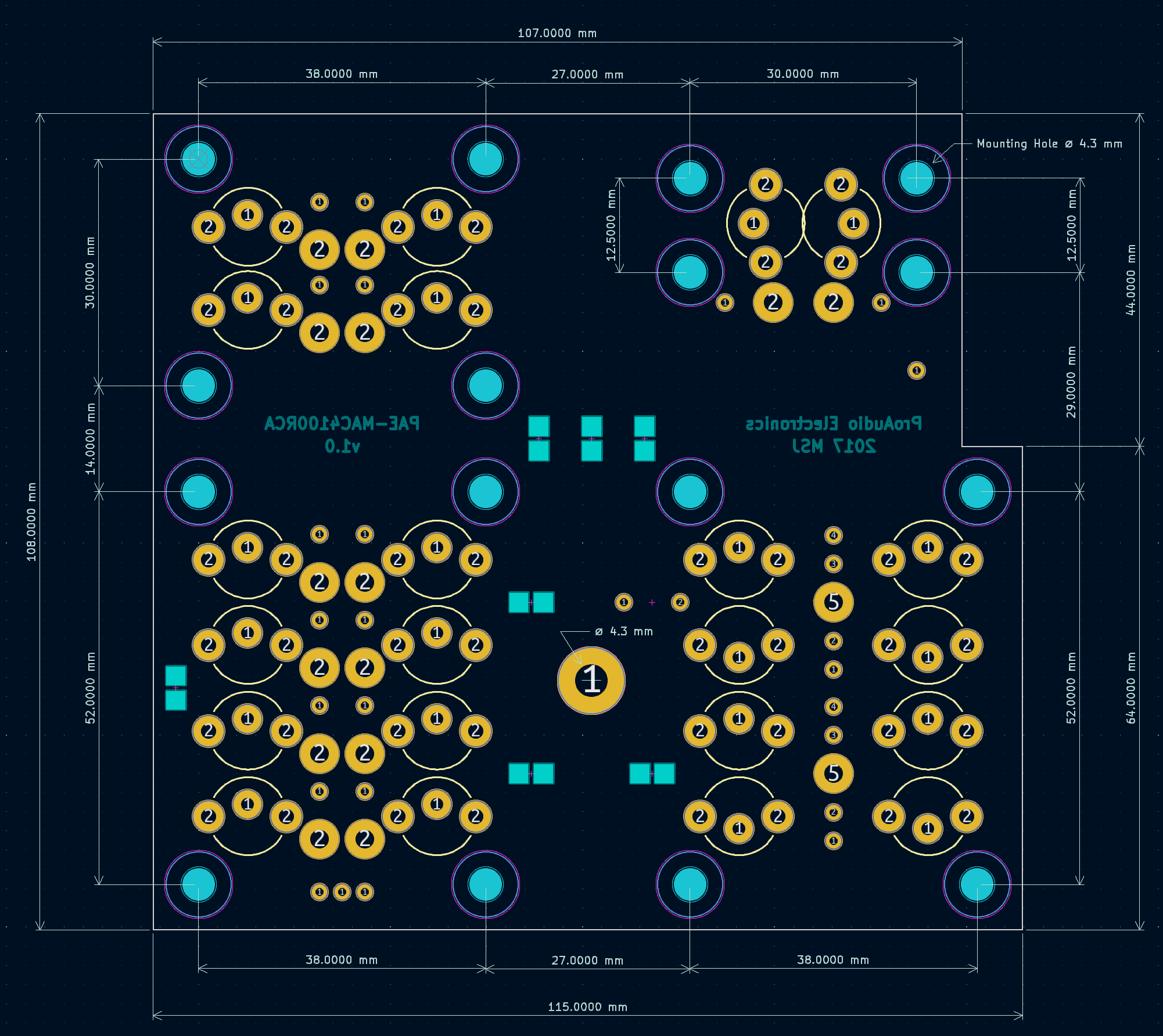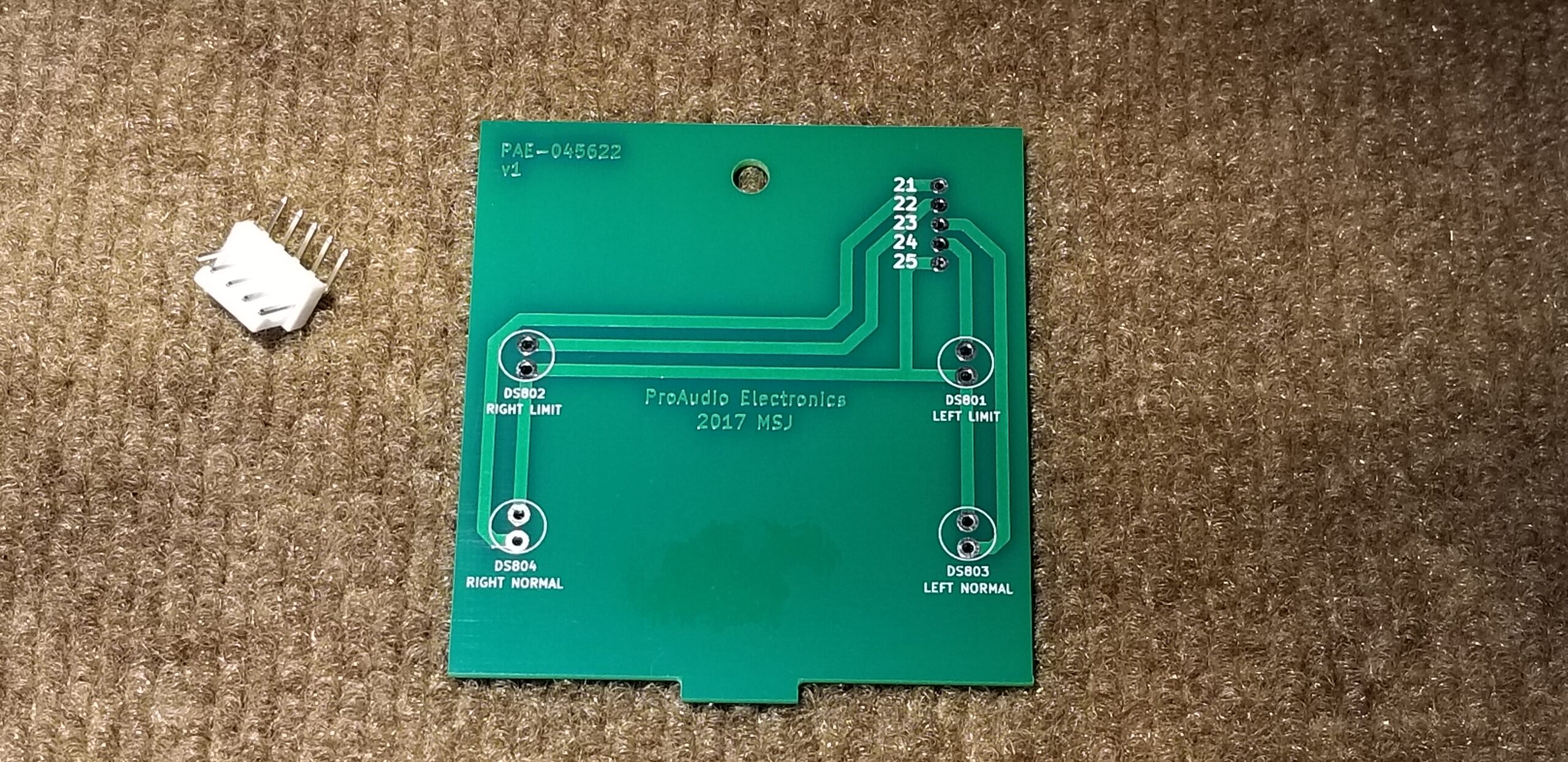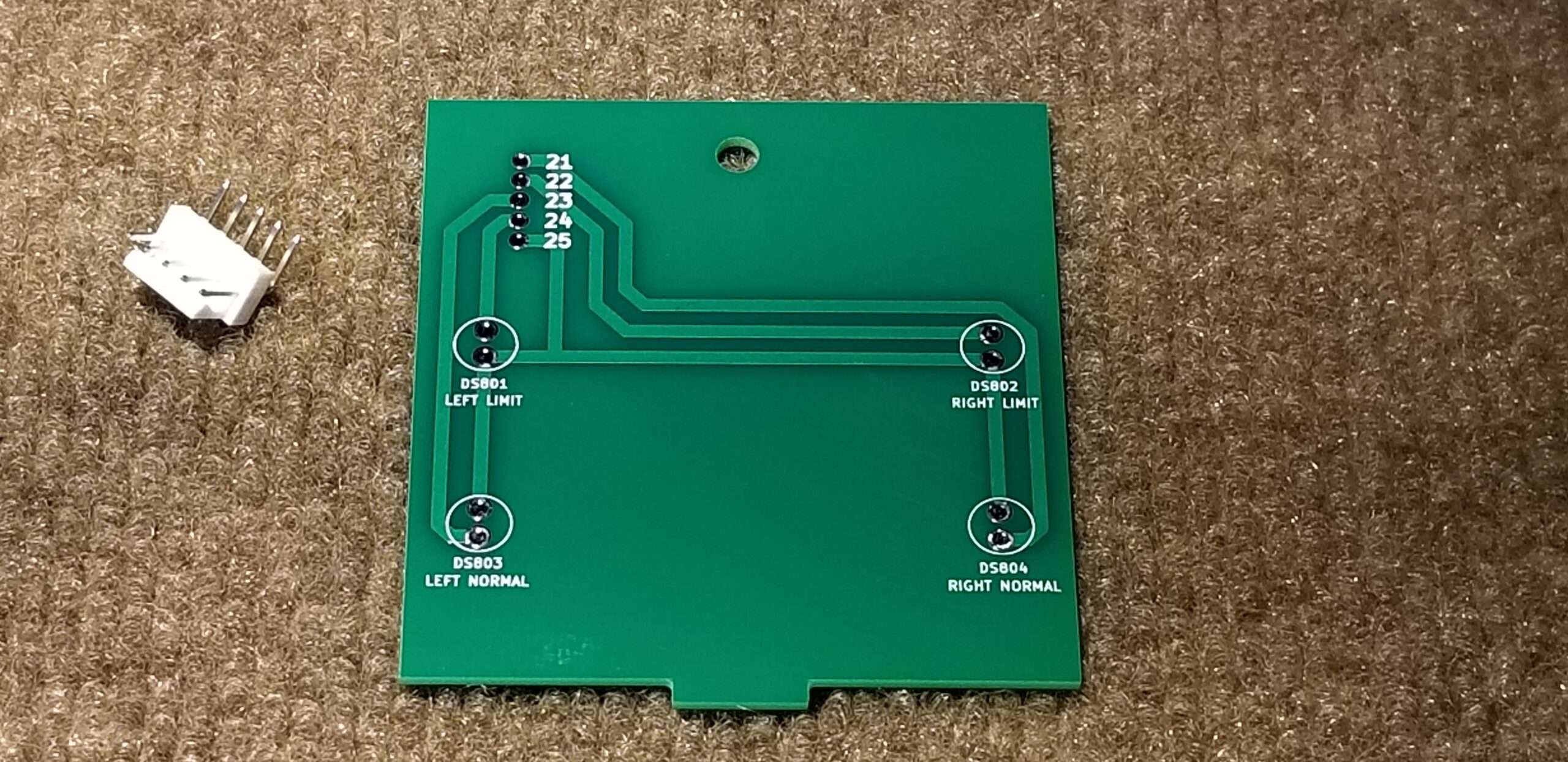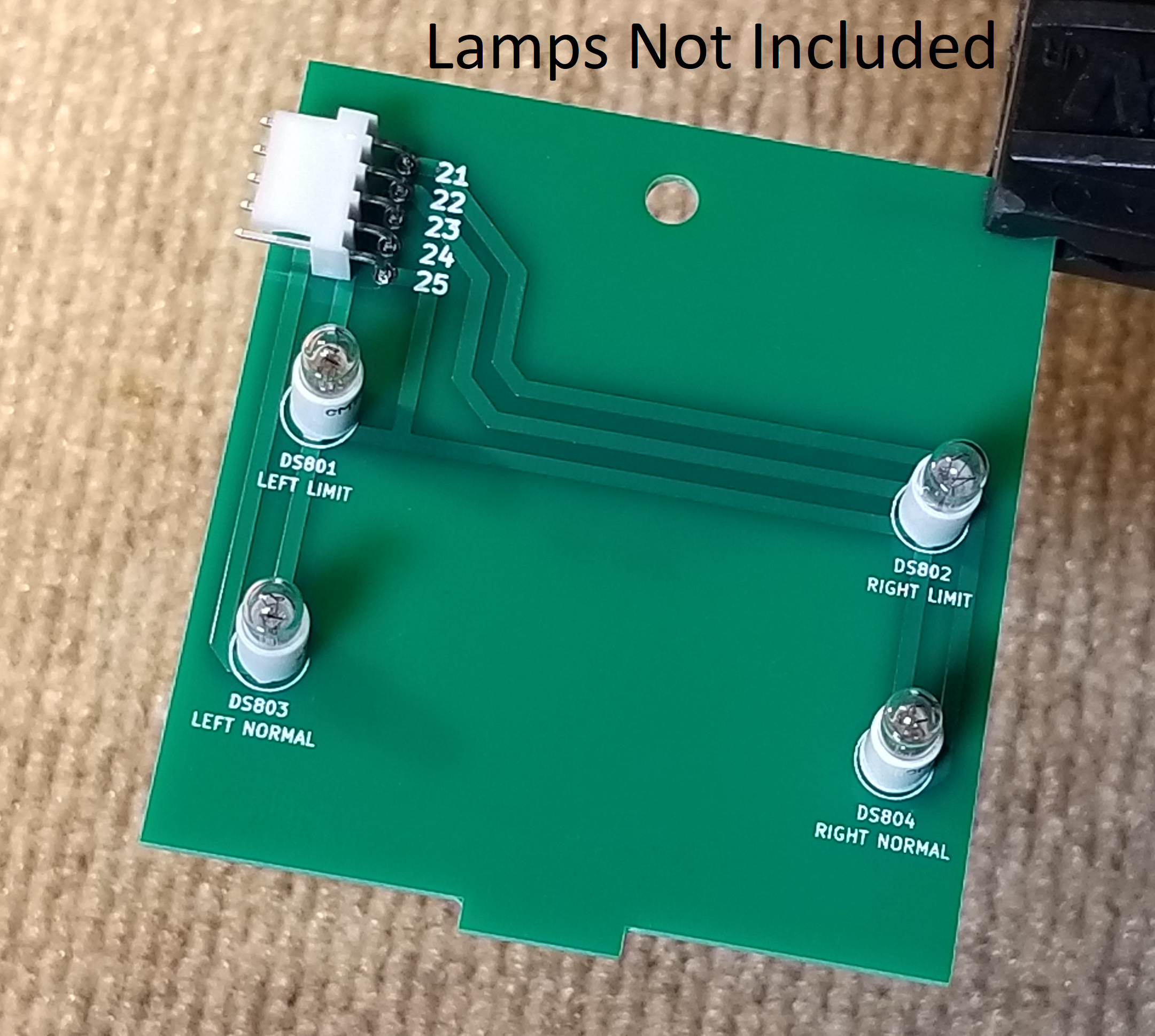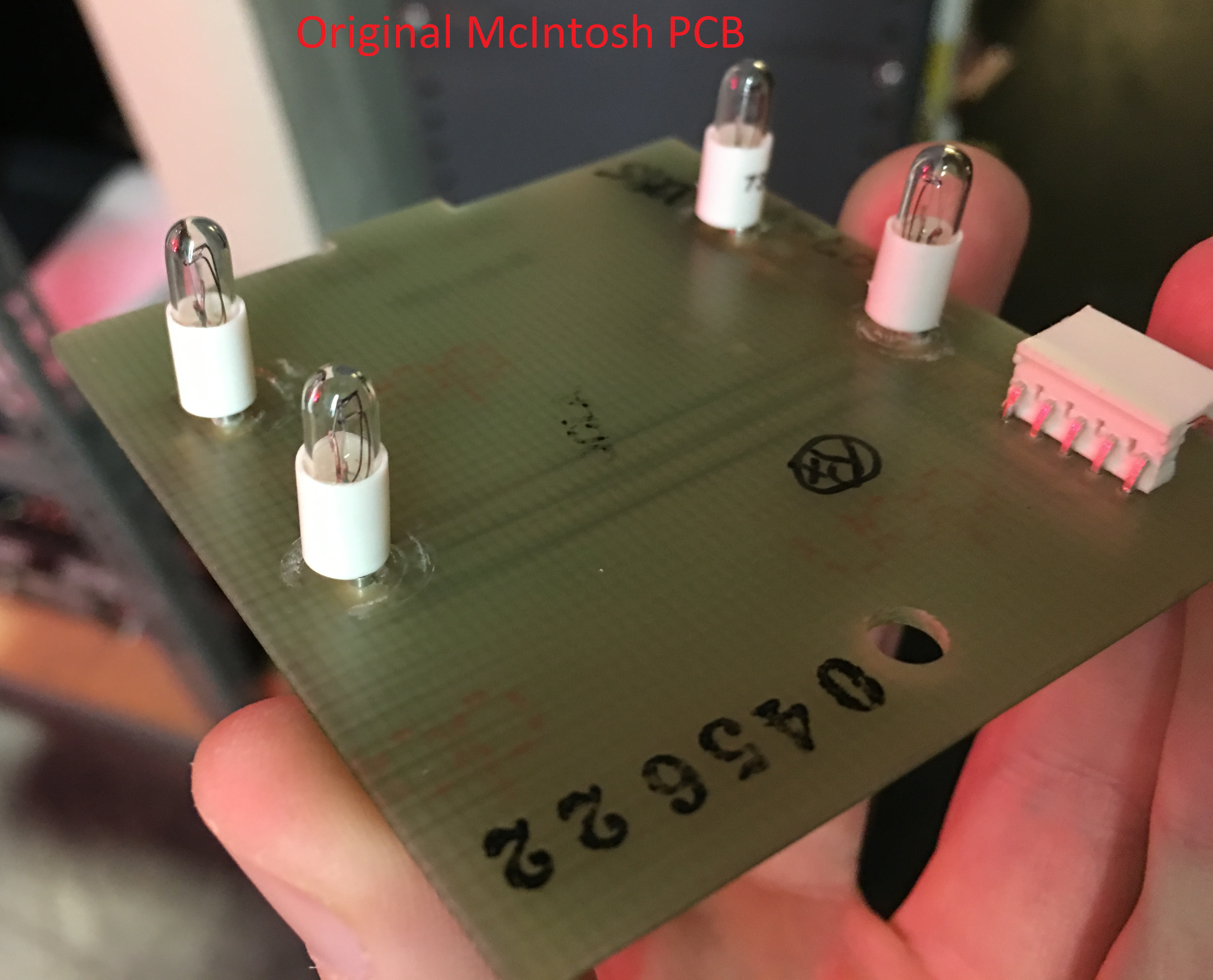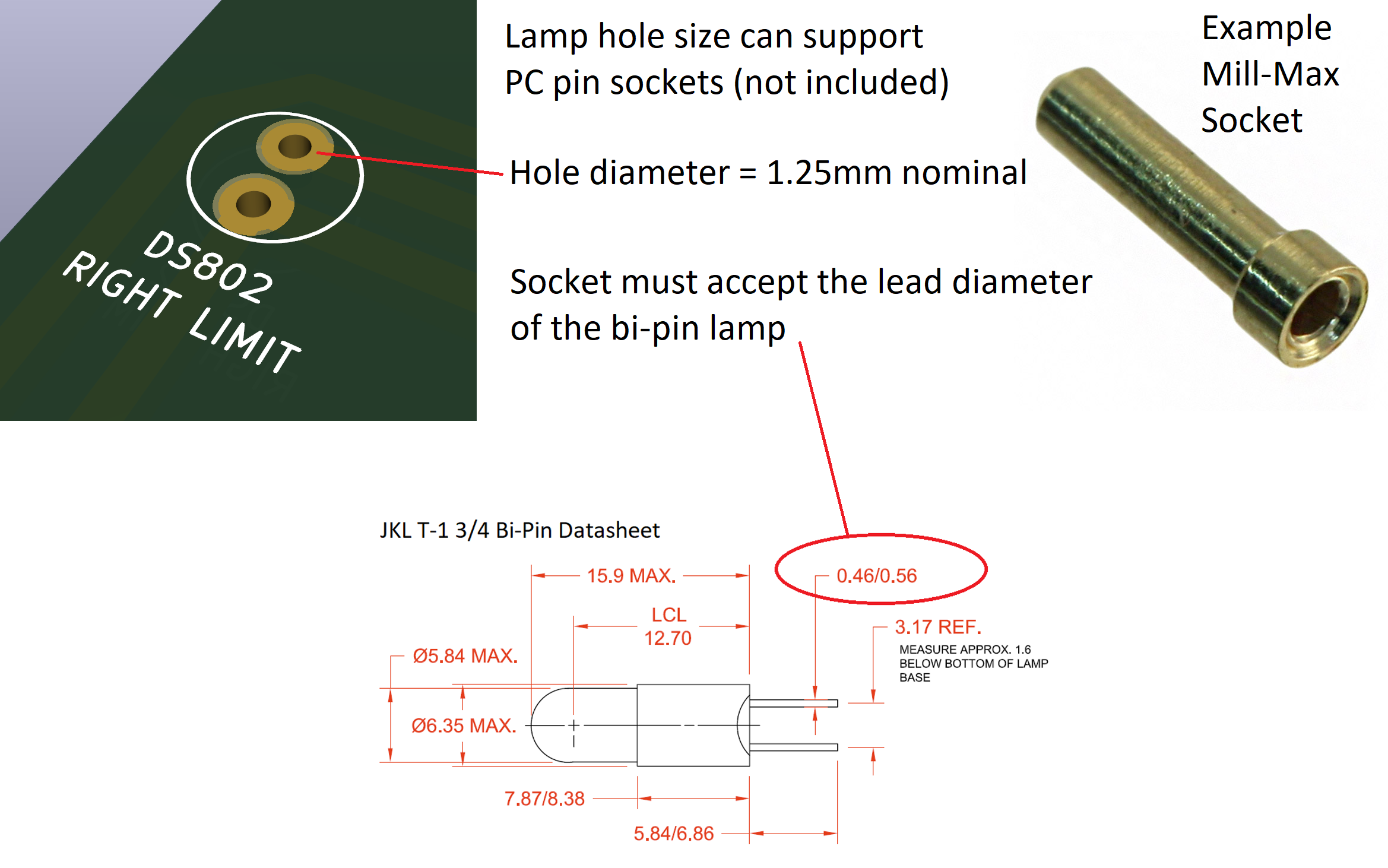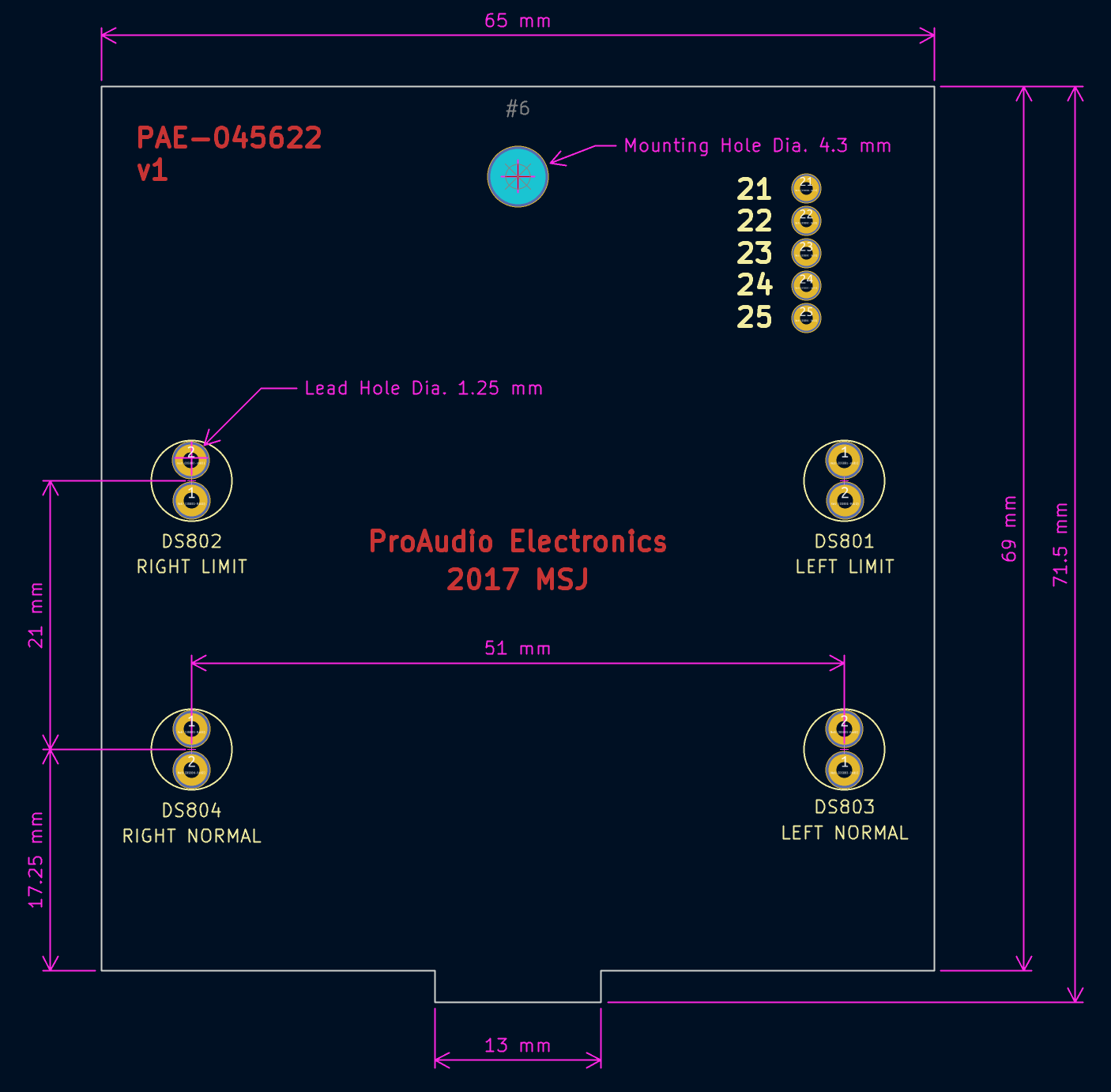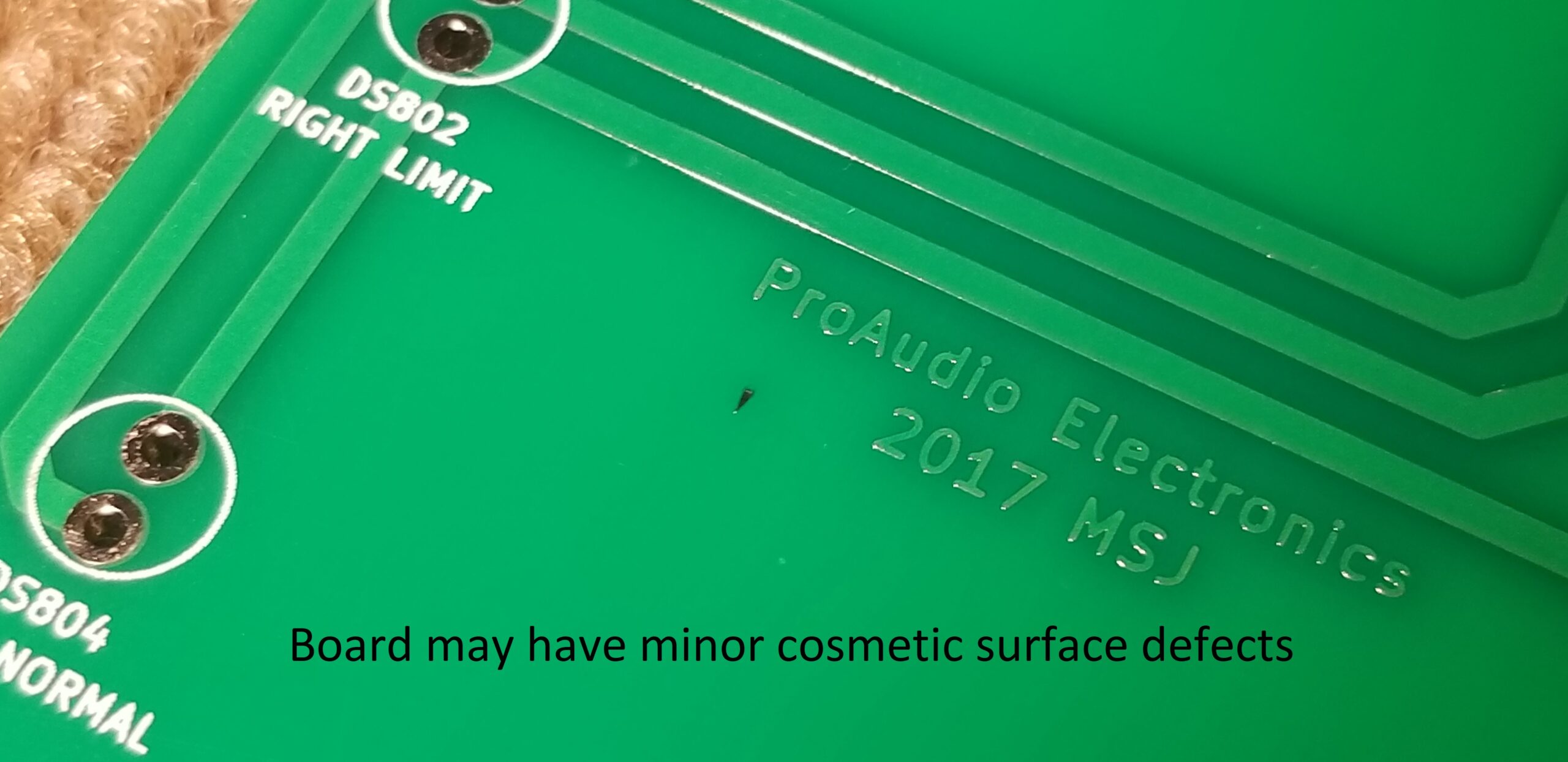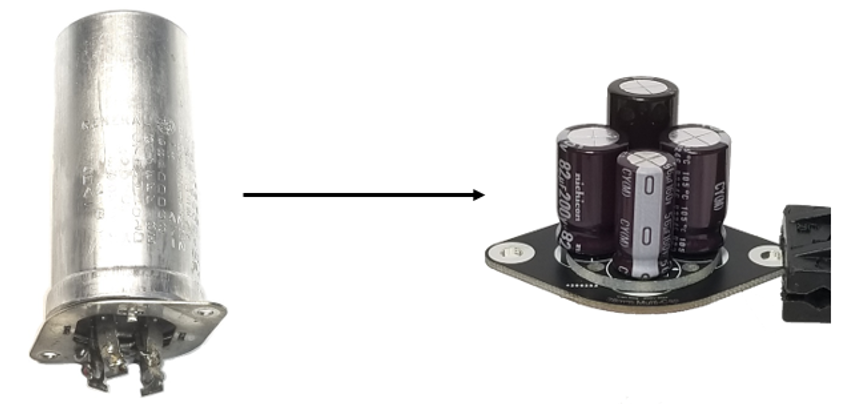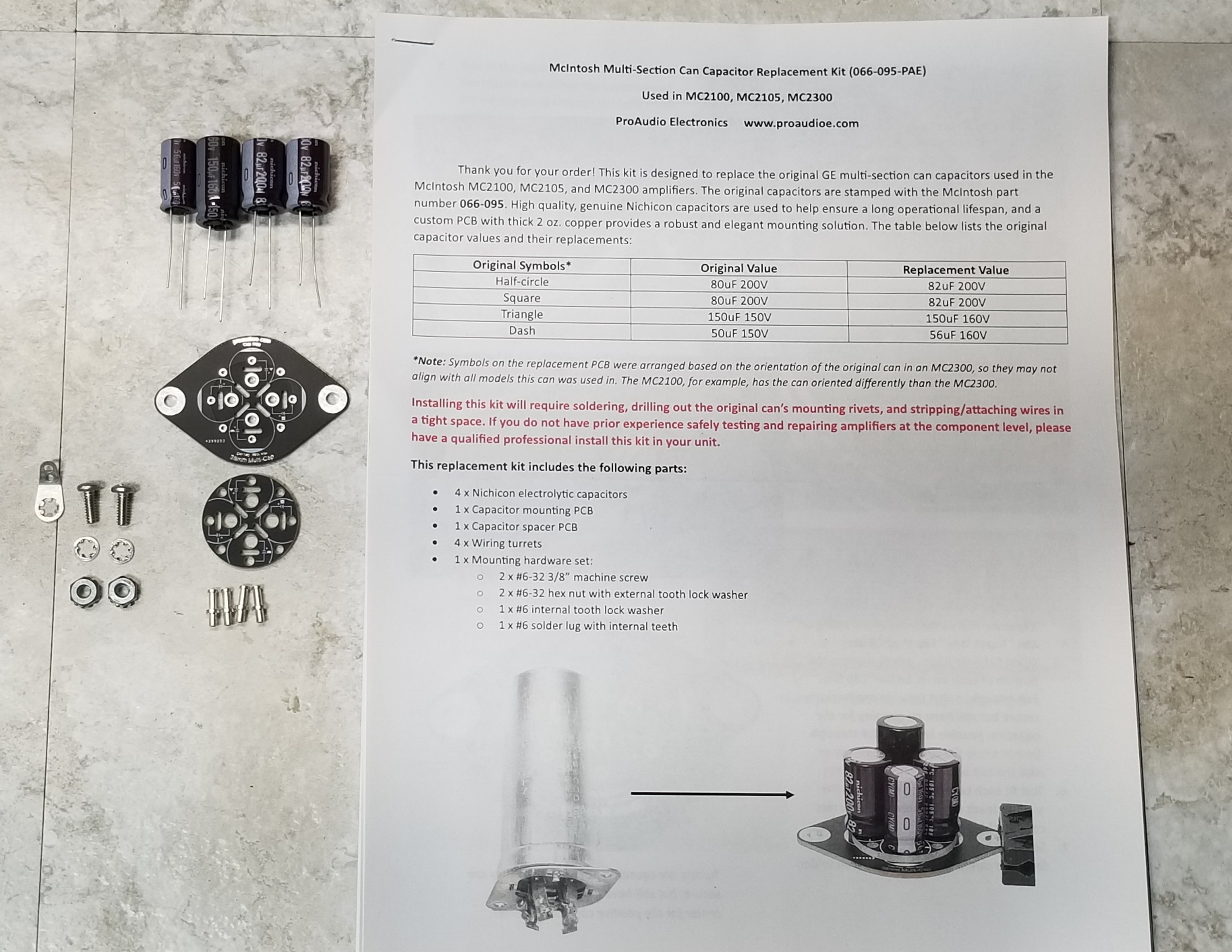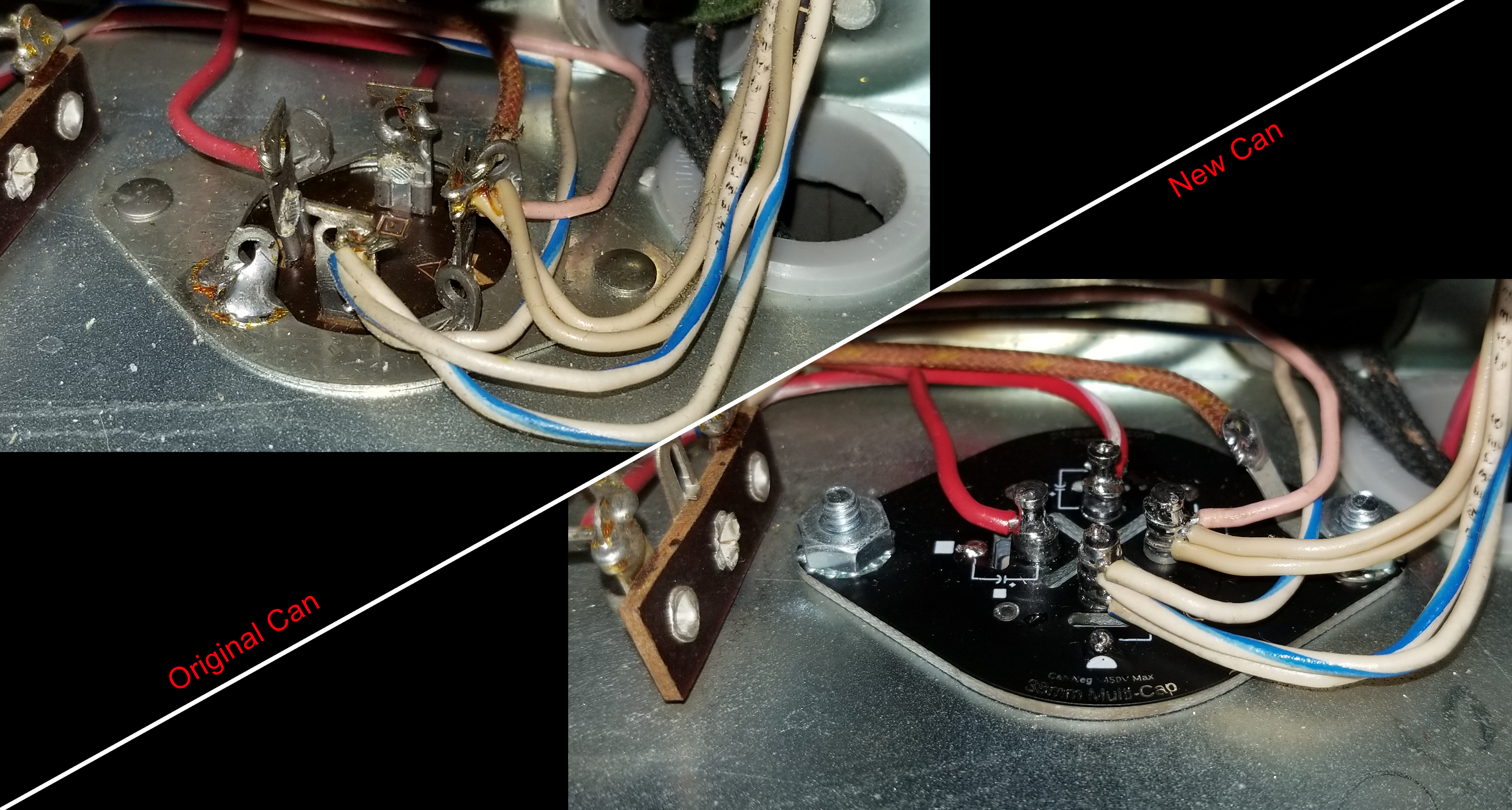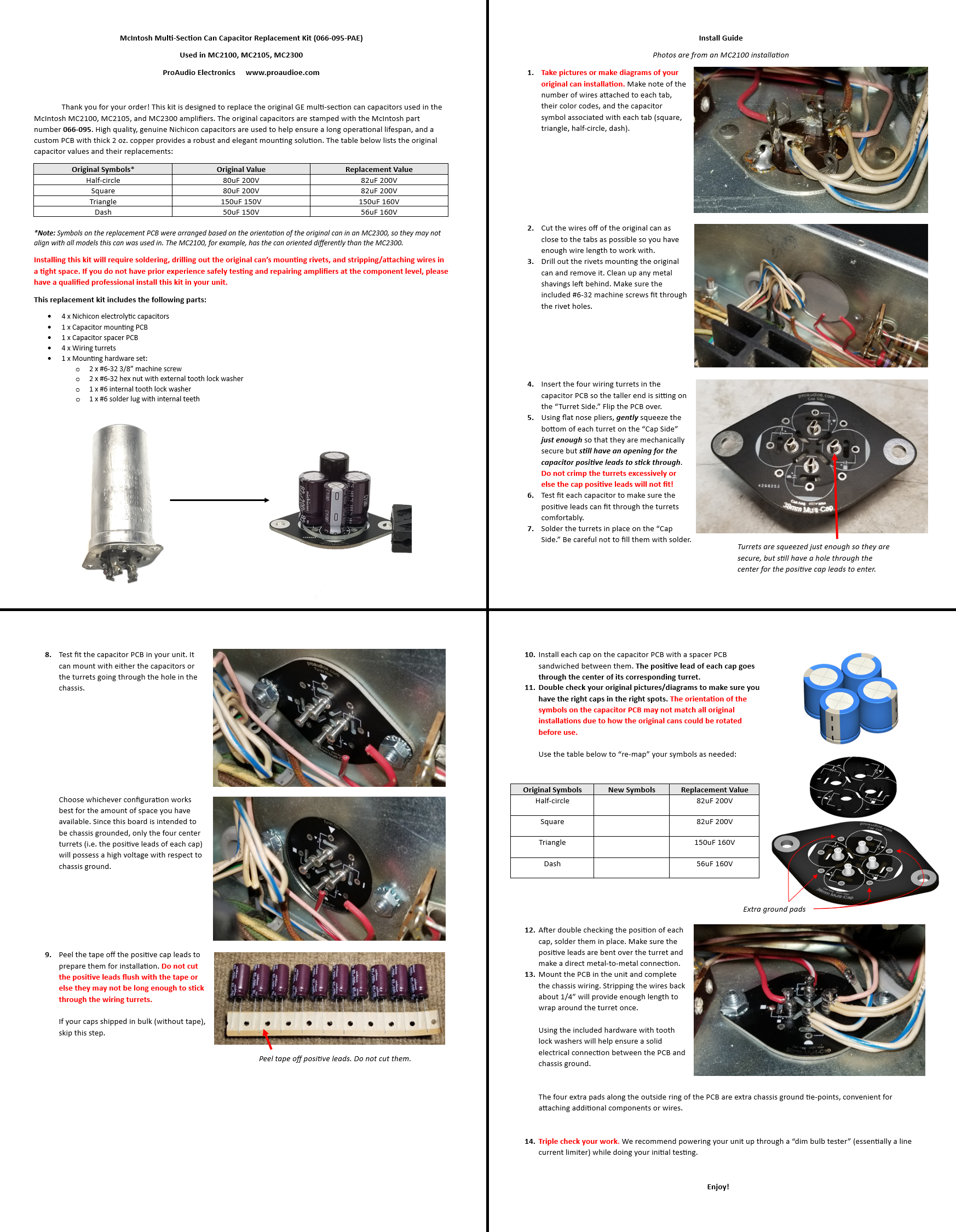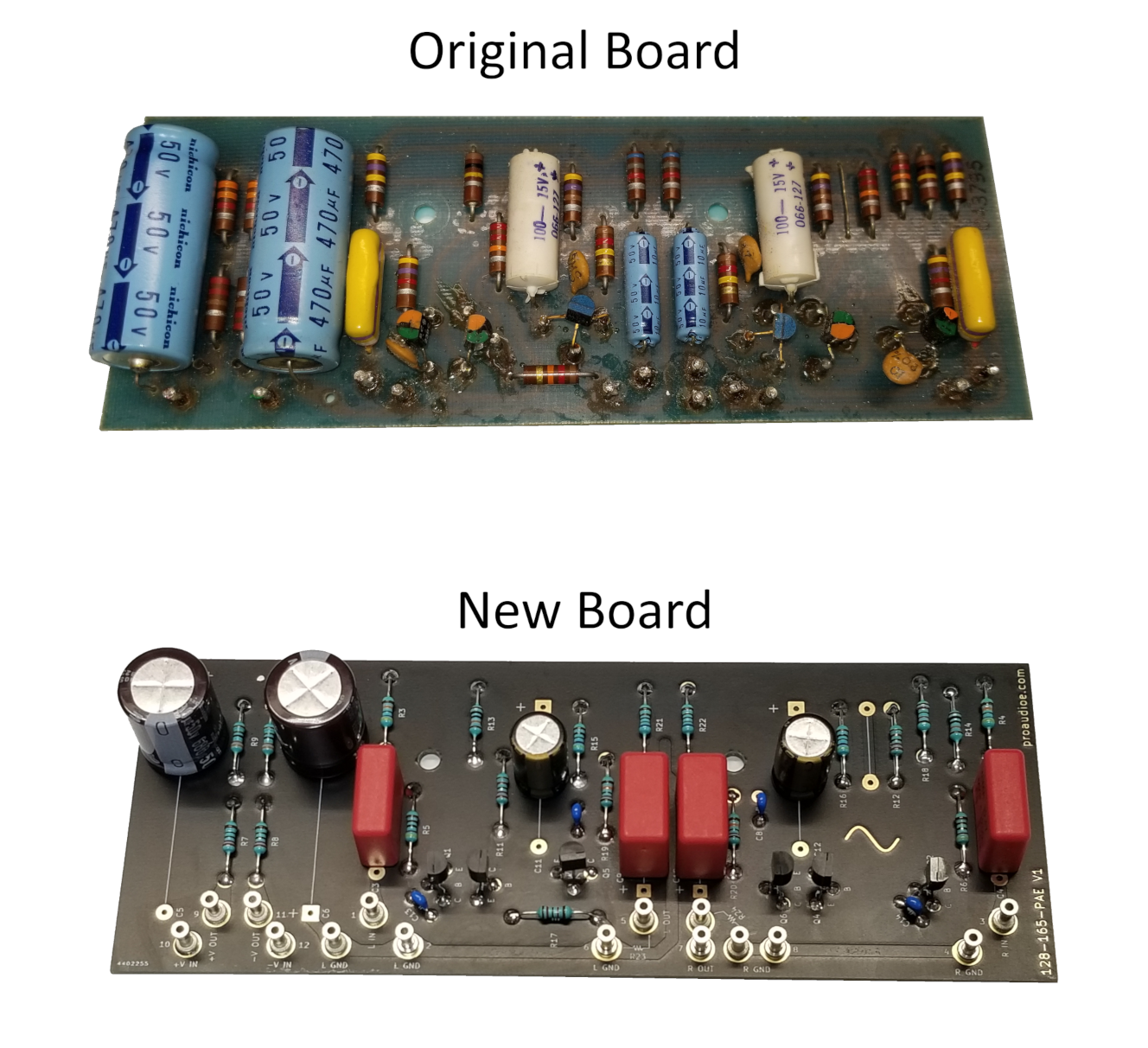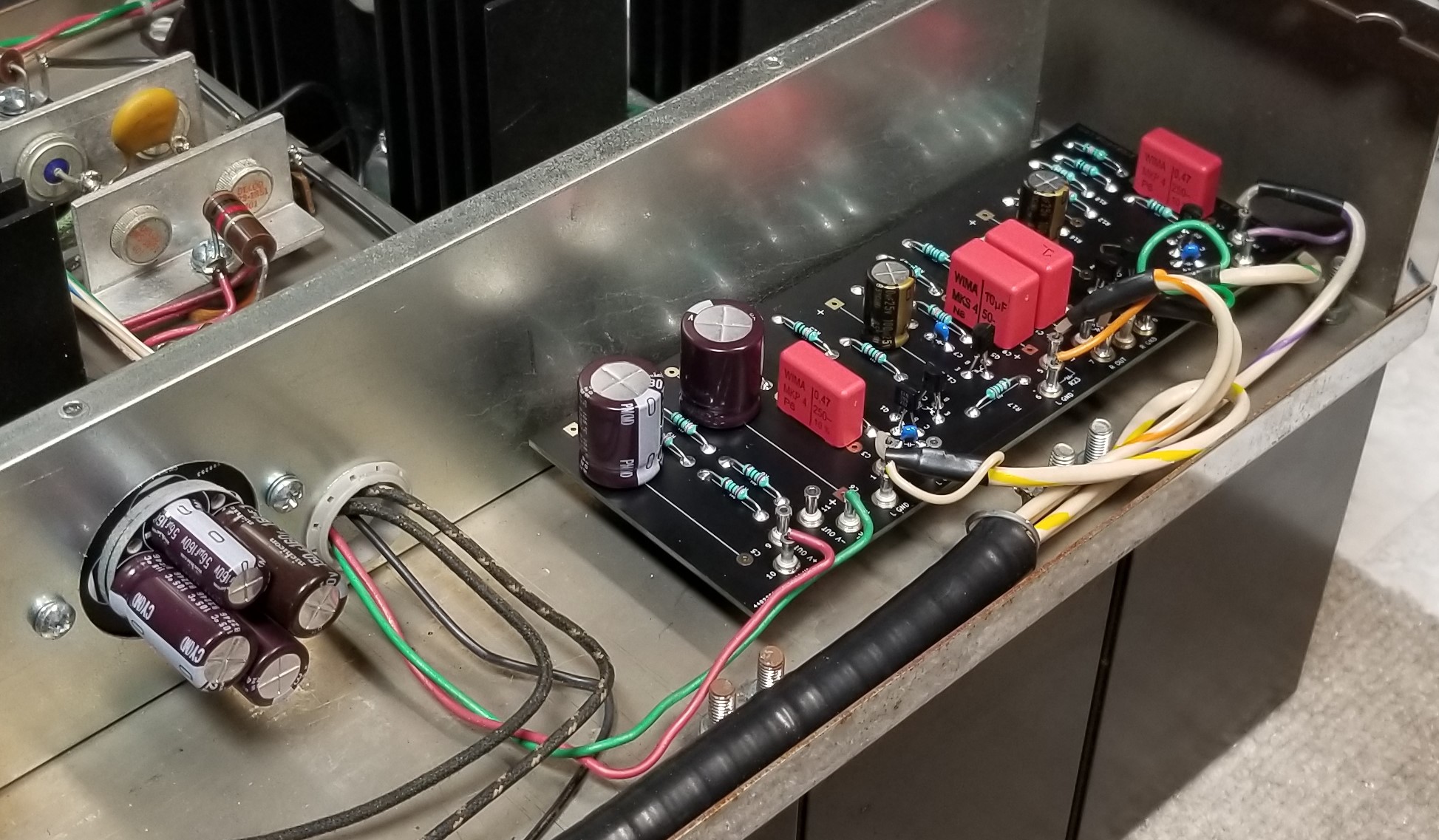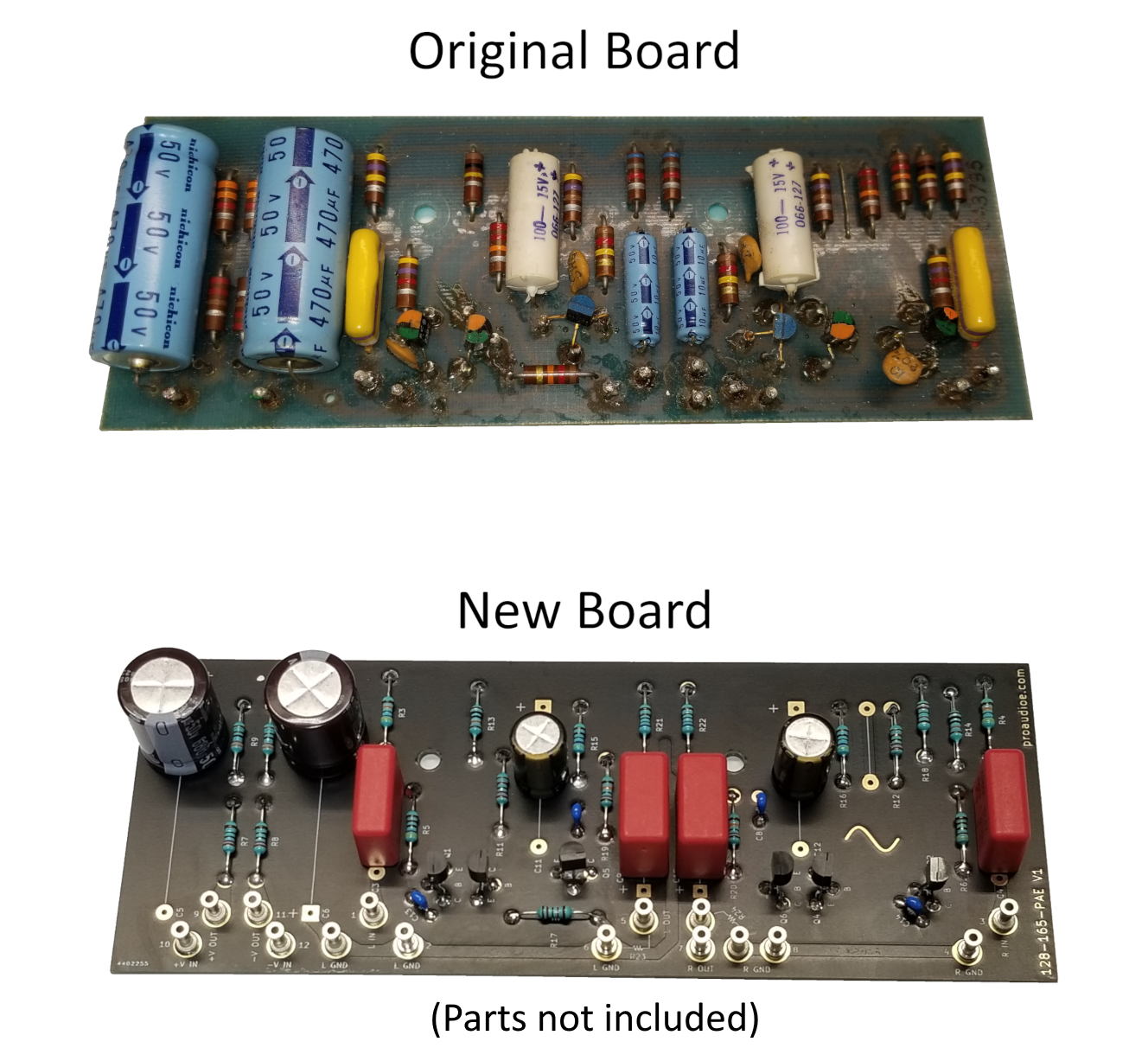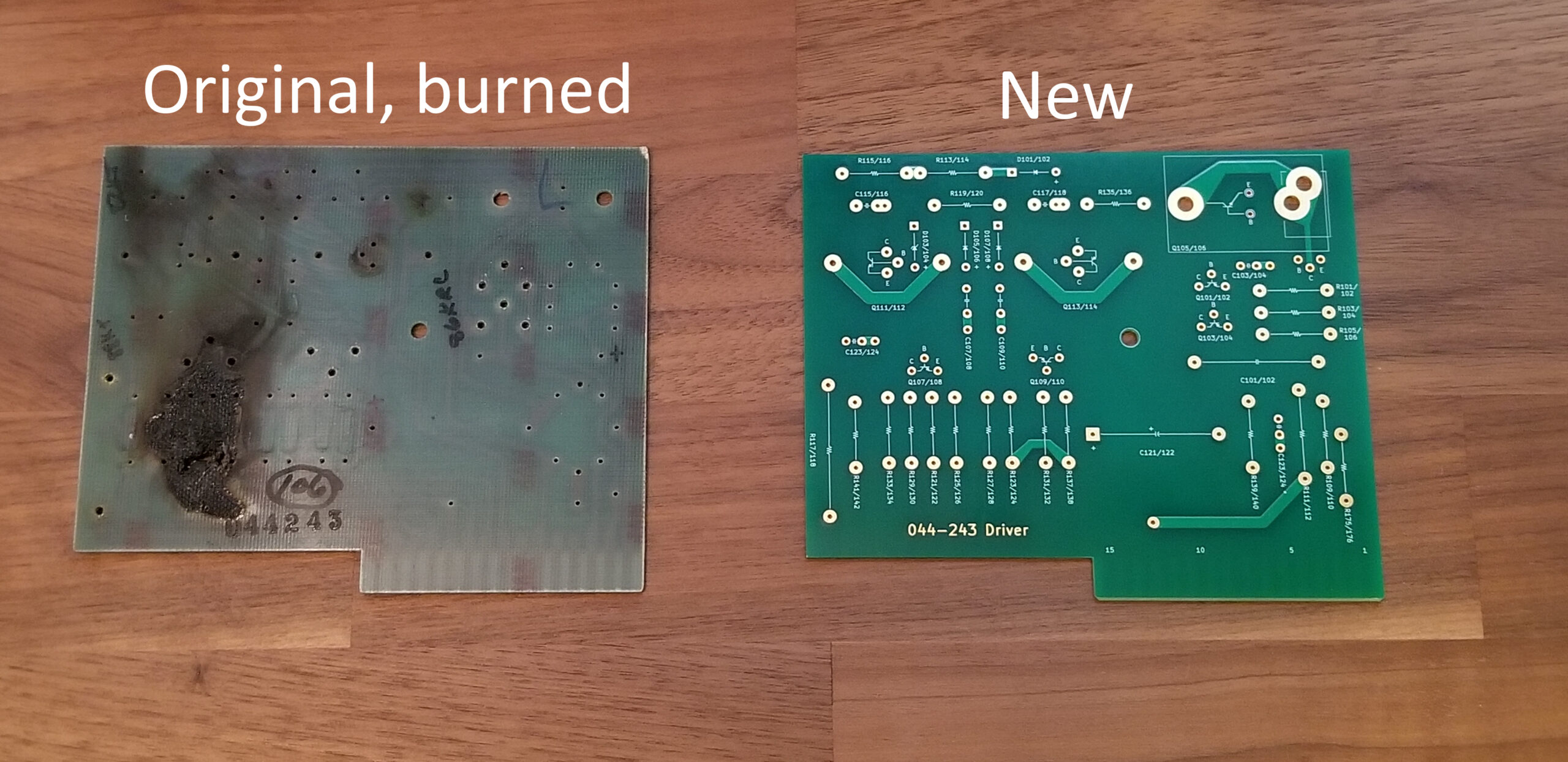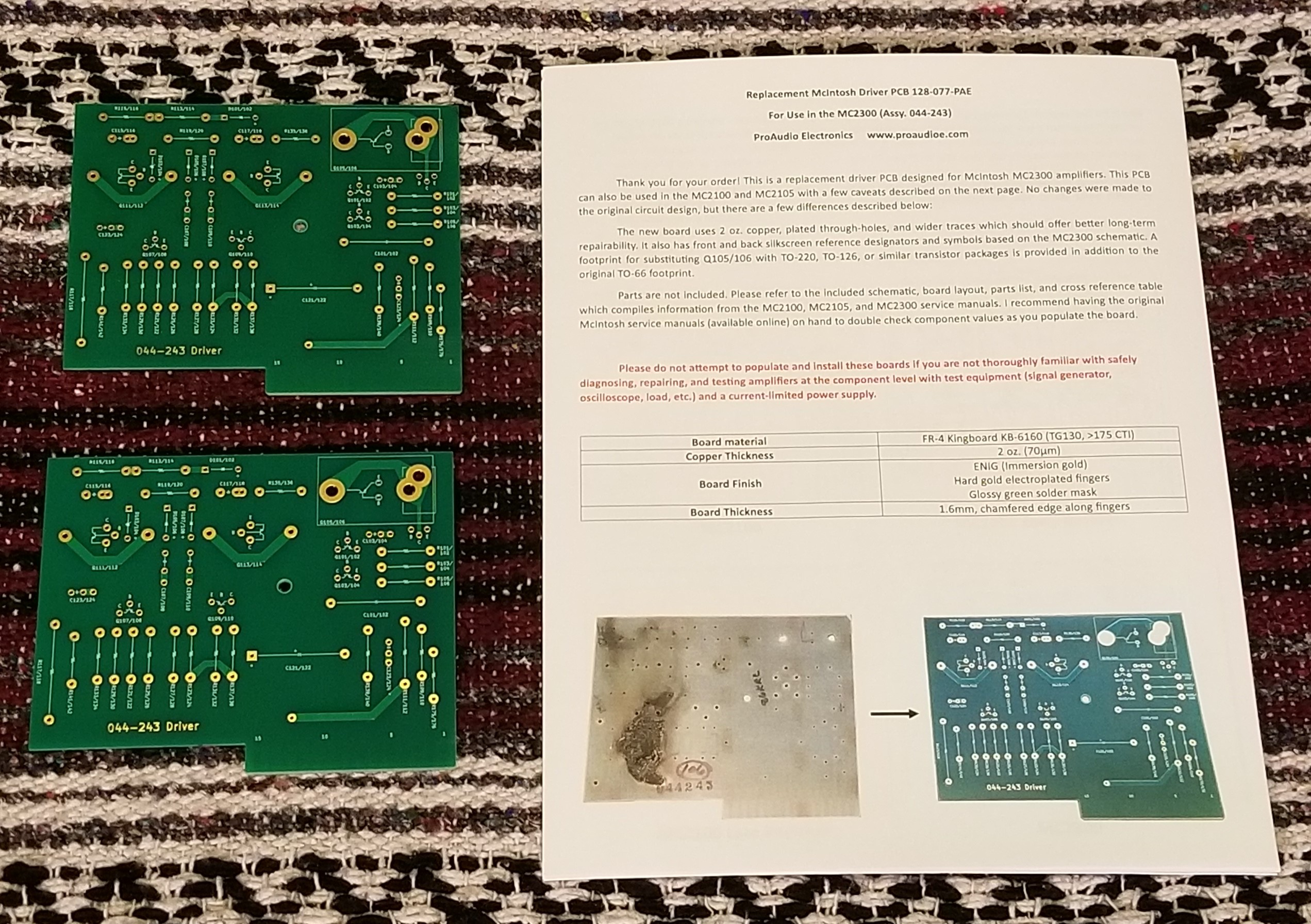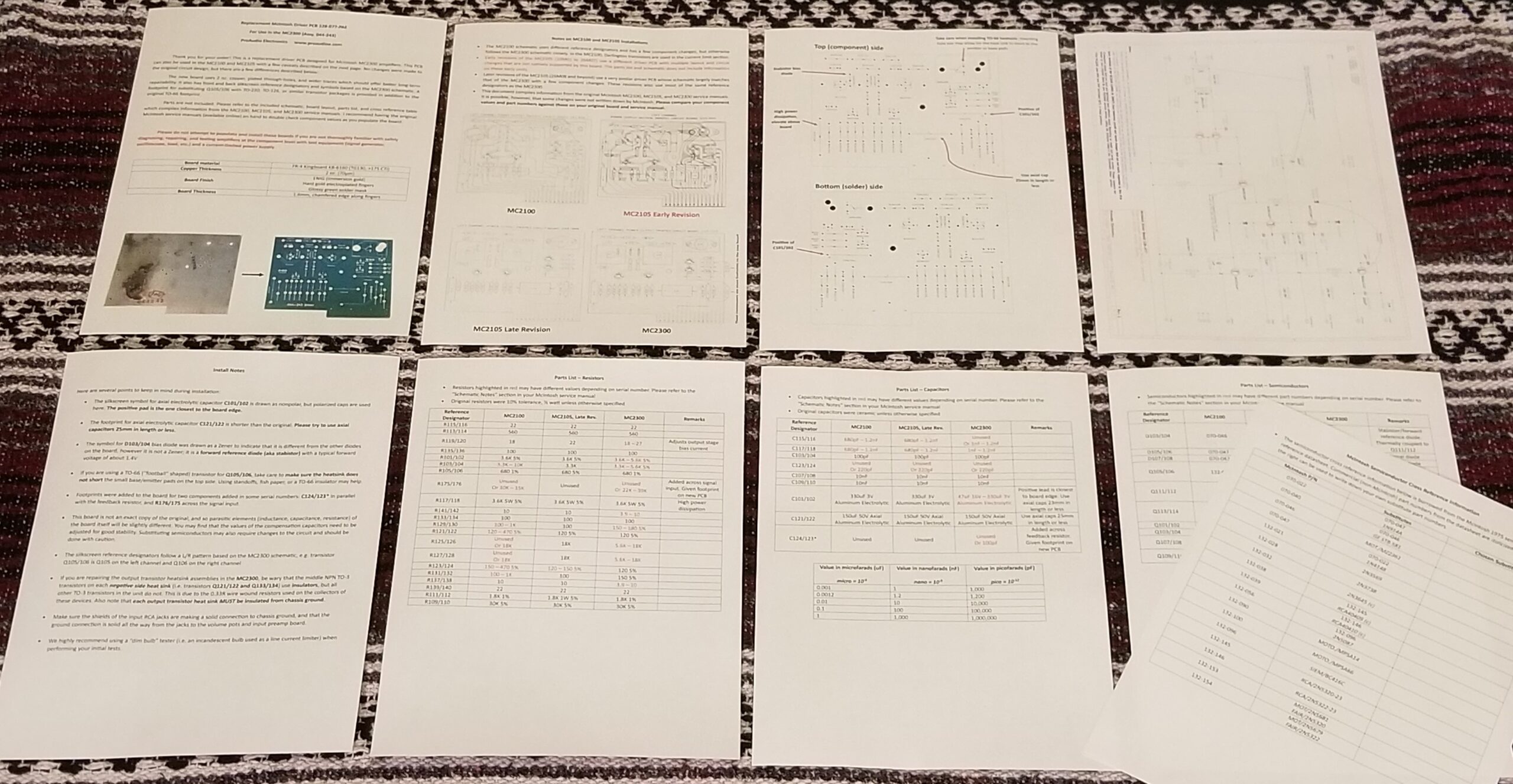Replaces multi-section cans with 1.5 inch CTC mounting holes. Fits three 5 mm or 7.5 mm lead spacing, 12.5 mm diameter capacitors
Click the link below to download the installation guide
This kit is intended as an easy way to mount new radial electrolytic capacitors when replacing 1 inch diameter multi section can capacitors with 1.5 inch mounting hole spacing CTC. This design was modeled after an Astron A-25-65 can. These were often used in vintage radio equipment.
Up to three different caps can be installed, and they all share a common lead located in the center. The center common lead has a trace connecting it to one of the mounting holes, making it convenient to tie to chassis ground; if you need to isolate this board from chassis ground, take a look at our insulation kit. The spacer board sits between the new caps and mounting board and adds clearance between the turrets and cans of the caps. Four turrets provide a robust post for wires and other components to attach to when installing.
If you use a positive-common configuration, be wary that the cans of electrolytic caps are often tied to the negative lead (cathode), but not always. Thus, voltages may exist between the cans depending on the circuit, so space them apart as needed.
Based on IPC-2221B guidelines, this board is not to be used in circuits that may see peak voltages above 450 V assuming a typical negative-common configuration.
Specifications:
- Board material: FR-4 Kingboard TG150 (CTI >175)
- Board finish: HASL (lead-free solder), green solder mask
- Copper thickness: 2 oz.
- Screw hole spacing: 37.79mm center-to-center (Approx. 1.5 inches)
- Screw hole size: 3.8mm (#6-32 fits slightly loose to allow adjustment)
- Wiring/turret hole size: 2.4mm
- Width: 47.59mm
- Length: 34.14mm
- Board thickness: 1.6mm
- Height from surface of mounting board to top of a turret: 7mm
- Max capacitor diameter: 12.5mm
- Capacitor lead spacing: 5mm and 7.5mm
- Insulator board diameter: 29mm
- Insulator board thickness: 2mm
- Insulator board hole size: 4.2mm for turrets, 2.6mm for capacitor leads
- Diameter of turret’s hole: 1.63mm
Note: Dimensions are nominal values. Outline dimensions may vary by ±0.15mm, and hole sizes by ±0.076mm.

